This is the second part of a two-part essay on Queer Cinema which spans the years 1934 to 1976.
With the death of the Hays code in 1967 and the formation of the MPAA rating system in 1968, Queer Cinema was ready to come out of the closet. The period of 1967-1976 can be seen as Queer Cinema’s Stonewall with:
- The first documentary that dared to focus on an American gay man. It’s is a cinéma vérité masterpiece.
- The first movie where all the characters are gay, echoing “The Women” thirty years earlier.
- A gay man directs the only Oscar winner for Best Picture to get an X-rating, and it’s about a gay hustler!
- In 1962, we saw the inside of a gay bar in “Advice and Consent.” In 1968, we saw the inside of a lesbian bar in “The Killing of Sister George.” Cheers!
- Italian Cinema gave the world three gay classics in the course of two years with Bertolucci’s “The Conformist,” Visconti’s “Death in Venice” and De Sica’s “The Garden of the Finzi Cortini’s”
- The blending of Queer Cinema and New German Cinema thanks to the genius and the astonishing productivity of actor/writer/director/producer Rainer Werner Fassbinder.
- The irrepressible John Waters and his gorgeous star Divine arrive on the scene in 1972.
- One of the seminal American movies about the rise of fascism in Nazi Germany has a gay character in the leading role and some of the best musical numbers to ever hit the silver screen.
- Director Christopher Larkin released “A Very Natural Thing” in 1974. It is the first gay film targeted at a general audience, and while it feels like a failed curiosity today, it was at least a beginning.
- The Maysles brothers made “Grey Gardens” in 1975. Over the years, it has become a gay cult classic.
- The first Queer Canine appears in Clint Eastwood’s “The Eiger Sanction” in 1975.
- English director Derek Jarman made his directorial debut with Sebastiane in 1976.
- Of the 48 narrative features listed, 20 are from original screenplays, and 28 are adapted from another medium. Source material in the latter category includes novels by F. Scott Fitzgerald, Frederick Forsyth, William Goldman, James Leo Herlihy, Stephen King, Thomas Mann, Philip Roth, William Makepeace Thackeray, and two novels by D. H. Lawrence. There is a song by Bobbie Gentry and plays by Mart Crowley, Charles Dyer, John Van Druton, and Rainer Werner Fassbinder. Enjoy!
ONE OF THE MOVIES LISTED WON BEST PICTURE, WHILE SIX MORE WERE NOMINATED IN THIS CATEGORY
1. Portrait of Jason (1967)
A
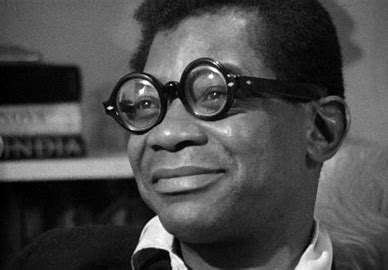
Shirley Clarke
LGBTQ+ CHARACTER:
*Jason Holliday (né Aaron Payne playing Himself)
A true breakthrough and a film that has improved with age, documentary filmmaker Shirley Clarke interviews gay African-American hustler and aspiring cabaret performer Jason Holliday in his apartment at the Hotel Chelsea. Jason is a STAR in his living room. He is magnetic and the sole screen presence in the film. As he narrates his troubled life story to the camera – there are several songs and numerous costume changes – Clarke and her partner behind the camera, Carl Lee, use cinéma vérité techniques to reach the sadness underlying Jason’s theatrical exaggerated persona. Like so many, Jason was ahead of his time.
Clarke was the sister of the novelist Elaine Dundy and, from 1951 to 1964, the sister-in-law of the theatre critic Kenneth Tynan.
NOW STREAMING ON THE CRITERION COLLECTION
2. No Way to Treat a Lady (1968)
C
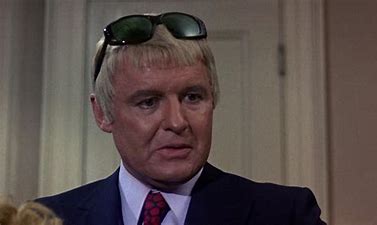
Jack Smight
LGBTQ+ CHARACTER
*Christopher Gill aka “Dorian” (Rod Steiger)
THE SWISHY MINCING FAG | FAIRY | QUEEN WAS A STAPLE OF HOLLYWOOD FROM THE MID-SIXTIES TO THE MID-EIGHTIES. STEIGER’S DORIAN IS THE FIRST OF FOUR FAIRY QUEENS IN THIS ESSAY.
THIS CHARACTER STILL POPS UP OCCASIONALLY – WITNESS THE CHOREOGRAPHER IN PAUL THOMAS ANDERSON’S “LICORICE PIZZA.”
You Homo
SYLVIA to DORIAN – NO WAY TO TREAT A LADY
That does not mean that you are a terrible person
DORIAN to SYLVIA – NO WAY TO TREAT A LADY
Isn’t that fantastic and breathtaking?
DORIAN to MISS BELLE POPPIE – NO WAY TO TREAT A LADY
Well, honestly, the suspicion of some people
DORIAN to SYLVIA – NO WAY TO TREAT A LADY
Christopher Gill (Rod Steiger) is a serial killer fixated on his late mother, a noted stage actress. Gill preys on older women who remind him of Mama. A Broadway theatre owner and director, he adopts various disguises, such as a priest, policeman, plumber, hairdresser, etc., to put his victims at ease (and avoid being identified) before strangling them!
“Dorian,” Gill’s hairdresser persona, is gay with a classic sibilant-rich delivery. In the movie’s best scene, just as he is caressing the neck of his next intended victim, Miss Belle Poppie (a wonderful Barbara Baxley who has a house full of cats) during a wig fitting – “Isn’t that fantastic and breathtaking” – he is interrupted by the arrival of her sister Sylvia (Doris Roberts, always so good at putting someone in their place) who knows that something is not quite right. Dorian reacts with “Well, honestly, the suspicion of some people,” and after Sylvia’s “you homo” delivers the movie’s classic line, “Well, that doesn’t mean you’re a terrible person.” As a gay man, I should be disturbed by Steiger’s queer turn. However, this scene always ends with me rolling on the floor with laughter.
“No Way to Treat a Lady” was adapted by John Gay from William Goldman’s novel of the same name and directed by Jack Smight—it also stars George Segal, Eileen Heckart, and an underused but still captivating Lee Remick.
NOW STREAMING ON AMAZON PRIME, APPLE TV+, YOUTUBE
3. The Fox (1968)
B+
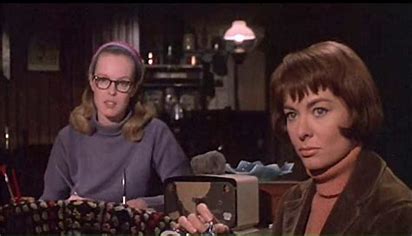
Mark Rydell
LGBTQ+ CHARACTERS
*Jill Banford (Sandy Dennis)
*Ellen March (Anne Heywood)
Director Mark Rydell (“The Rose,” “On Golden Pond”) moves the location of D.H. Lawrence’s short story to rural Canada, where our lesbian couple Jill Banford (Sandy Dennis) and Ellen March (Anne Heywood) support themselves by raising chickens. They are happy and content. There is genuine chemistry between the two actresses without things being overtly physical. Then, unexpectedly, in the dead of winter, merchant seaman Paul (Keir Dullea) arrives on the property in search of his grandfather.
Yes, a fox keeps killing the chickens, and there is a dying oak tree, which we begin to realize is the Canadian equivalent of Chekov’s gun. Like John Huston’s “Reflections in a Golden Eye,” released the previous year, “The Fox” does interesting things with color saturation (Bill Fraker was the cinematographer), and the Lalo Schifrin score has, deservedly, entered the jazz canon.
All three leads are impressive, and although the ending is a disappointment from a gay perspective, the movie is well worth seeing.
“THE FOX” IS NOT AVAILABLE FOR STREAMING. THE DVD CAN BE PURCHASED FROM AMAZON.
4. The Detective (1968)
D+
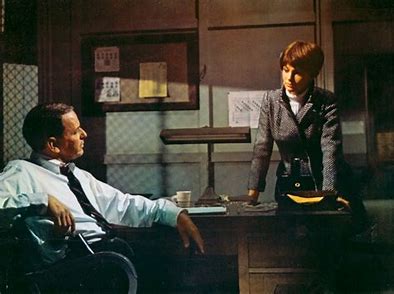
Gordon Douglas
LGBTQ+ CHARACTER
*Colin MacIver (William Windom)
LGBTQ+ COSTUME DESIGNER
Donald Brooks
Frank Sinatra does his best under the circumstances, playing a policeman investigating the deaths of several gay men in New York City. However, the awful script by Abby Mann – doing for homosexuals what he did for Jews in “Judgement at Nuremberg” – and the mediocre direction by Gordon Douglas put the kibosh on everything. William Windom plays the type of gay character that makes every adolescent gay boy want to jump off a bridge. It’s awful but worth seeing as a pre-Stonewall period piece. Rumor has it that the underperformance of “The Detective” relative to “Rosemary’s Baby” played a significant part in the Farrow-Sinatra breakup.
Adapted from the novel by Roderick Thorp
NOW STREAMING ON AMAZON PRIME, APPLE TV+, YOUTUBE
5. The Boston Strangler (1968)
C-
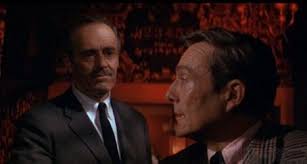
Richard Fleischer
LGBTQ+ CHARACTERS
*Terence Huntley (Hurd Hatfield)
*Eve Collyer (Ellen Ridgeway)
*Alice Oakville (Gwyda Donhowe)
LGBTQ+ ACTOR
Hurd Hatfield
Released the same year as “The Detective,” “The Boston Strangler” is another serial killer movie that, although not part of Queer Cinema per se, is filled with “queers” and “faggots” as the police comb the gay demimonde in search of the strangler (Tony Curtis, whose brave performance is the film’s only redeeming feature). Hurd Hatfield, a long way from his Dorian Gray days, has a good scene in a gay bar where Henry Fonda is questioning him. He has been fingered by two nasty dykes played by Eve Collyer and Gwyda Donhowe, in a gay-turning-on-gay scene that has to be seen to be believed – let’s hope both actresses lived to regret ever making this movie. The screenplay by Oscar-winner Edward Anhalt (“Becket”) is so nonchalantly homophobic it makes you glad you live in a more enlightened era. Richard Fleischer directs with so many split screens it’s distracting. It’s a nasty piece of filmmaking, voyeuristic, but not in the cinematic sense. It makes you feel like a peeping tom! It makes you feel dirty. And, it tuns out, very little of what is documented here actually happened.
Adapted from the novel by Gerold Frank.
NOW STREAMING ON AMAZON PRIME, APPLE TV+, YOUTUBE
6. The Killing of Sister George (1968)
B
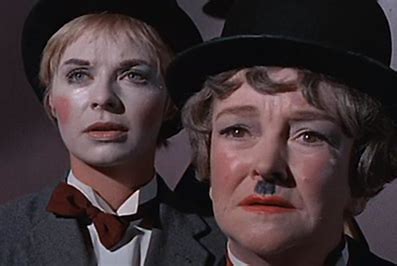
Robert Aldrich
LGBTQ+ CHARACTERS
*June “George” Buckridge (Beryl Reid)
*Alice “Childie” McNaught (Susannah York)
*Mercy Croft (Coral Browne)
LGBTQ+ ACTOR
Carol Browne
THE FIRST LOOK INSIDE A LESBIAN BAR
Beryl Reid is marvelous as “George.” That’s not her name. It’s the name of the character she plays in a beloved long-running BBC series. She is in a lesbian relationship with the much younger Childie (Susannah York) and thinks she is about to get canned from the show. Enter Carol Browne as a BBC executive with the hots for Childie, and George cannot get a break.
Robert Aldrich does an excellent job here, just like he did with Bette and Joan in “Baby Jane.” The relationship between George and Childie seems precisely right, and Browne is also very believable as the predatory suit who holds all the cards – the film’s only major error is a gratuitous and embarrassing seduction scene that should have been left on the cutting-room floor.
“The Killing of Sister George” follows in the footsteps of “Advice and Consent” six years before, only this time, it’s a lesbian bar. Cheers!
Lukas Heller, who also adapted “Whatever Happened to Baby Jane?”, did a respectable adaptation of Frank Marcus’s 1964 British novel.
NOW STREAMING ON YOUTUBE.
7. Rachel, Rachel (1968)
B-
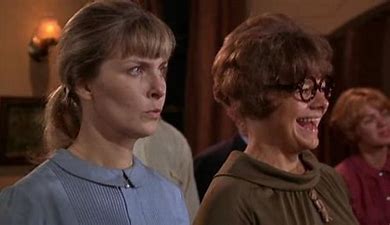
Paul Newman
LGBTQ+ CHARACTER
*Calla Mackie (Estelle Parsons)
Paul Newman produced and directed (his debut) Rachel, Rachel,” a slight tale about a schoolteacher’s (Newman’s wife Joanne Woodward) sexual awakening in her mid-thirties in a small Connecticut town. Highly regarded at the time of its release (NYFCC awards going to Newman as Best Director and Woodward as Best Actress), it seems a bit underwhelming today. However, it does offer one of the first sympathetic portraits of a lesbian character in an American Film: Rachel’s fellow schoolteacher, Calla. Calla, who has a crush on Rachel, is nicely played by Estelle Parsons, coming off her Oscar in “Bonnie and Clyde.” The screenplay was adapted from Margaret Laurenceis’s novel “A Jest of God” by Stewart Stern.
.
NOW STREAMING ON AMAZON PRIME, APPLE TV+, YOUTUBE
8. 2001: A Space Odyssey (1968)
A
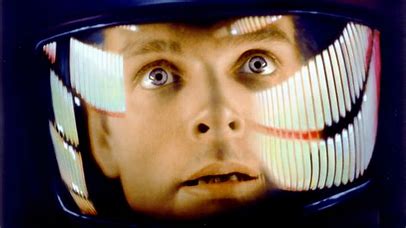
Stanley Kubrick
LGBTQ+ CHARACTER
*HAL 9000 Computer voiced by actor Douglas Rain.
THE HAL 9000 COMPUTER BECOMES AIs FIRST GAY ICON.
I am putting myself to the fullest possible use, which is all I think that any conscious entity can ever hope to do
HAL TO DAVE – 2001: A SPACE ODYSSEY
In Stanley Kubrick’s “2001: A Space Odyssey”, HAL 9000 is the psychotic gay computer (brilliantly voiced by Canadian actor Douglas Rain with just the right amount of queerness!) aboard Discovery One. The starship is bound for Jupiter with mission pilots and scientists Dr. David “Dave” Bowman (Keir Dullea) and Dr. Frank Poole (Gary Lockwood). HAL is in love with Dave and quickly dispatches Frank and the other three astronauts journeying in suspended animation.
Original screenplay by Kubrick and Arthur C. Clarke.
NOW STREAMING ON AMAZON PRIME, APPLE TV+, MAX(YOUTUBE)
9. The Sergeant (1968)
C+
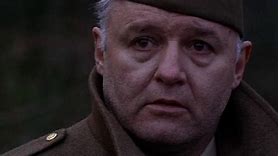
John Flynn
LGBTQ+ CHARACTER
*MSgt Callan (Rod Steiger)
Master Sergeant Callan was Rod Steiger’s second gay role of 1968, but unlike “Dorian,” his mincing hairstylist persona in “No Way to Treat a Lady,” hardly anybody saw it.
The subject matter, its release during the Christmas season of 1968, and a couple of scathing (and homophobic) reviews by some of the foremost critics of the time (Kael, Crist, and Canby were among them) that resembled a shark-feeding frenzy, quickly sealed its fate. The film is not terrible. Directed by John Flynn, making his directorial debut, and produced by his former boss, director/producer Robert Wise, it is eerily similar, in so many ways, to John Huston’s “Reflections in a Golden Eye,” which was released the previous year with Marlon Brando.
Both movies feature a martinet who revels in the life of men among men. Callan rules over his military camp (in this case, it’s rural France in 1952 – there is a black-and-white precredit sequence set during the closing days of WWII – with an iron fist, all the while lusting after a beautiful young man. In “Reflections,” that obscure object of desire was Robert Forster, mostly bare-assed and riding Elizabeth Taylor’s favorite horse. Here it is John Phillip Law, looking beautiful between his star-making role in “The Russians are Coming, the Russians are Coming” and the blind angel in Roger Vadim’s “Barbarella.”
But while “Reflections” had the genius of Carson McCullers and Huston (not to mention Brando, Taylor, Julie Harris, and Brian Keith), “The Sergeant” can only rise above its pedestrian screenplay on occasion. The sanctimonious parallel heterosexual romance between Law and a young French woman (Ludmila Mikael) does not help matters. The best moments are thanks to the above-average performances of both leading men. Steiger – arguably the most flamboyant of all the great American actors – has a few memorable scenes, all of which border on camp.
There is a kiss, but it’s more of the Judas than the Cupid variety.
Adapted from the novel by Dennis Murphy
NOW STREAMING ON APPLE TV+, YOUTUBE
10. The Damned (1969)
B-
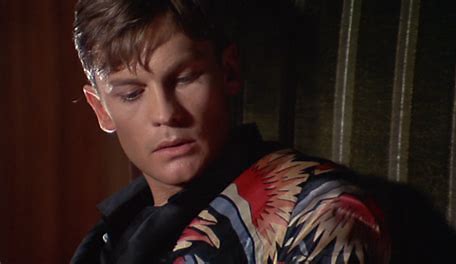
Luchino Visconti
LGBTQ+ CHARACTER
*Martin von Essenbeck (Helmut Berger)
LGBTQ+ DIRECTOR
Luchino Visconti
LGBTQ+ ACTOR
Dirk Bogarde
LGBTQ+ ACTOR
Helmut Berger
Many of the old German families sided with Hitler in the closing days of the Weimar Republic. Luchino Visconti’s “The Damned” centers on the Essenbecks (loosely based on the Krupp family) on the night of the Reichstag fire in early 1933. After a grand opening, the film misfires. Part of the reason is that Visconti edited the film around his then-lover Helmut Berger, who did his famous Marlene Dietrich impersonation. However, the absolute destruction came from Hollywood lopped off additional footage on the film’s American release. As a result, Dirk Bogarde, Charlotte Rampling, and Helmut Griem, despite giving their all, fade in and out of the picture.
Original, Oscar-nominated screenplay by Nicola Badalucco, Enrico Medioli and Visconti
NOW STREAMING ON AMAZON PRIME VIDEO
11. Staircase (1969)
C-
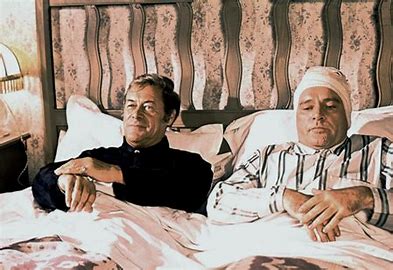
Stanley Donen
LGBTQ+ CHARACTERS
*Charles Dyer (Rex Harrison)
*Harry C. Leeds (Richard Burton)
LGBTQ+ SOURCE MATERIAL
Charles Dyer (based on his play “The Staircase”)
Richard Burton and Rex Harrison are Harry C. Leeds and Charles Dyer (the names are anagrams of one another), an aging gay couple who own a barber shop in the East End of London. The shop is always empty, but that’s the least of their problems. Charles is about to go on trial for dressing as a woman in public. The movie is essentially a two-hander, adapted by director Stanley Donen from Charles Dyer’s play “The Staircase.” Although it has been “opened up” to include the character’s mothers (Kathleen Nesbit as Harry’s bedridden mum and, in a horrific piece of overacting, Beatrix Lehmann, as Charles’ mother from hell) and various passers-by, the film consists mainly of the two leads discussing their loving but often volatile past together and pondering their possible futures without each other.
They have their tender moments, but they mostly bicker, and while the same could be said of the gay couple played by Hume Cronyn and John Randolph in “There Was a Crooked Man,” the two relationships are light years apart. You immediately fall in love with the two old queens in an Arizona prison circa 1883 and believe in their love for one another. Not so with this relationship. Harrison’s performance is all affectation and condescension. Burton does better. His character has alopecia, and he spends the entire movie wearing a turban, which is funny. He has the occasional moment. Unfortunately, the film is never really taken seriously by its director, a man who showed such a light touch throughout his career from “Singing in the Rain” to “Funny Face” to “Charade.” That touch is missing here, and the souffle falls flat. What a pity!
NOW STREAMING ON YOUTUBE
12. Z (1969)
B+

Costa-Gavras
LGBTQ+ CHARACTER
*Vago (Marcel Bozzuffi)
Director Costa-Gavras’s “Z,” a thriller about the fall of an elected democratic government in an unnamed country – which is obviously Greece – and the establishment of a military junta, was feted by one award ceremony after another and one film critics association after another in the Winter of 1969/1970. However, few seemed to have noticed, or if they did, they didn’t seem to care that this is a homophobic film in which the main villain, Vago (Marcel Bozzuffi) – the man who strikes down Deputy Gregoris Lambrakis (played by Yves Montand) with a club from a speeding van – is a homosexual and convicted pedophile who trades sexual favors with other gay deviants such as the newspaper editor. These scum of the Earth perverts are contrasted with our handsome, intellectual and heterosexual heroes Montand and the examining magistrate Jean-Louis Trintignant. Some may give it an A+, but from a gay perspective, the most I can summon is a B+.
Cinematography by Raoul Coutard. Music by Mikis Theodorakis. Editing by Francoise Bonnot. Adapted Screenplay by Jorge Semprún and Costa-Gavras from the novel by Vassilis Vassilikos
“Z,” which means “he lives” (referring to Lambrakis) in Greek, was the first film to be nominated for both Best Film and Best Foreign Language Film. It won in the latter category. It was a French-Algerian coproduction.
NOW STREAMING ON AMAZON PRIME VIDEO AND MAX (YOUTUBE)
13. Midnight Cowboy (1969)
A
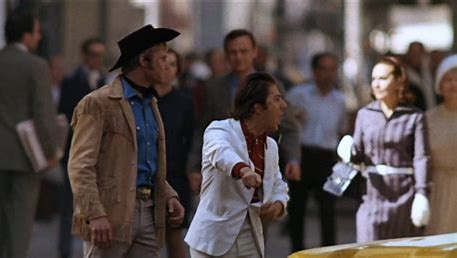
John Schlesinger
LGBTQ+ CHARACTERS
*Joe Buck (Jon Voight)
*Ratso Rizzo (Dustin Hoffman)
*Towny (Bernard Hughes)
*Young Student (Bob Balaban)
LGBTQ+ DIRECTOR
John Schlesinger
LGBTQ+ SOURCE MATERIAL
James Leo Herlihy (adapted from his 1965 novel “Midnight Cowboy”)
I’m Walkin’ Here
RATSO RIZZO – MIDNIGHT COWBOY
John Schlesinger’s American debut is the only X-rated movie to win Best Picture. Dated now, it still boasts two great performances courtesy of Jon Voight and Dustin Hoffmann. The gay thing is a bit primitive, with tortured souls getting killed by their tricks and numerous queer types from The Village in small parts, so the audience can contrast the real fags from the subtler queer dynamics of the Joe Buck – Ratso Rizzo relationship. And like “Darling,” “Midnight Cowboy” takes a dive during that long Warhol-inspired psychedelic party scene with Brenda Vaccaro. The film also features Bob Balaban, Bernard Hughes, and Sylvia Myles, who received an Oscar nomination for a few minutes’ work. The movie is based on the novel by gay writer James Leo Herlihy, who took his own life with an overdose of sleeping tablets in Los Angeles in 1993. He was sixty-six.
NOW STREAMING ON AMAZON PRIME, APPLE TV+ AND YOUTUBE
14. Goodbye Columbus (1969)
B-
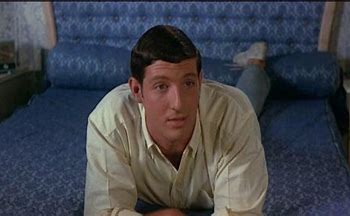
Larry Peerce
LGBTQ+ CHARACTER
*Ron Patimkin (Michael Meyers)
Ali McGraw’s movie debut was a BO success and paved the way for her sensational turn in “Love Story” the following year. Directed by Larry Peerce and based on the 1959 novella of the same name by Phillip Roth, with an adapted, Oscar-nominated screenplay by Arnold Schulman, the movie centers on Neil Klugman (Richard Benjamin), a nice middle-class Jewish boy from the Bronx who falls under the spell of Brenda Patimkin, a wealthy Radcliffe student whose parents are nouveau riche Jews who have grown rich in the plumbing business. There are similarities between this movie and Neil Simon/Elaine May’s “The Heartbreak Kid” from 1972, except in that movie, the golden girl, played by Cybill Shepard, is a Shiksa. In contrast, Ali McCraw’s character is a Jewish American Princess.
The Queer element in the film comes from Brenda’s older brother Ron (played by the late Michael Meyers, a name that had yet to become synonymous with a horror franchise). Ron is a star athlete – the film’s title alludes to a song he plays when he gets nostalgic for his glory days at Ohio State in Columbus – and he has his mind set on being a college coach. However, he has the hots for Neil, who he keeps inviting back to his room and slapping on the butt. And then there is the scene outside the bathroom where Ron, having just washed his jockstrap in the sink, regards Neil- or is it the game on the TV behind him – with such a goofy grin that he appears to be enraptured with him/it/them. To seal the deal, he is an avid collector of what he calls “semi-classical” music, and he prides himself in his extensive collection of Andre Kostelanetz and Montovani!
Unfortunately, Schulman and Peerce aren’t interested in Ron’s character. He marries a nice, rich Jewish girl whom Brenda supposes he has never slept with. And that’s that! The straight audiences who saw this in 1969 probably had no clue that Ron was a closeted homosexual. They were left feeling sorry for him because he was forced to work for his father-in-law’s business and, as a result, had to give up on his athletic dreams. It is unlikely that they would be grieving for his life in the closet and his loveless marriage.
NOW STREAMING ON AMAZON PRIME, APPLE TV+, YOUTUBE
15. The Sterile Cuckoo (1969)
B-
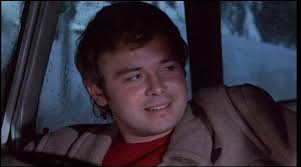
Alan J. Pakula
LGBTQ+ CHARACTER
*Charlie Schumacher, Jerry’s roommate (Tim McIntire)
In so many ways, Liza Minnelli’s Oscar-nominated turn as quirky, oddball, and very needy “Pookie” Adams in producer Alan J. Pakula’s directorial debut is a preview of her Oscar-winning performance three years later in Bob Fosse’s “Cabaret.” But while Sally Bowles was a creation for the ages, Pookie is a half-formed character that comes at you in spurts. Her justly famous telephone monologue comes to mind. However, sometimes, she seems lost in the moment and can be irritating and cruel. What she does have on Sally, though, is her gaydar. Sally was clueless that her lover and her (male) best friend were lovers. Pookie thinks that her shy boyfriend (Wendell Burton in his film debut) ’s roommate Charles (played by Tim McIntire) is gay. I think she was correct on this point. McIntire, the son of actors John McIntire and Jeanette Nolan, had made three movies before this one, and he appears to be more comfortable on screen than his costars. It’s a lovely, understated performance; you can feel his love for Jerry. The fact that she outs him in a most uncaring fashion makes us care about him all the more. Quite a coup in the year of Stonewall!
Adapted from the novel by John Nichols.
NOW STREAMING ON AMAZON PRIME, APPLE TV+ AND YOUTUBE
16. Performance (1970)
B-
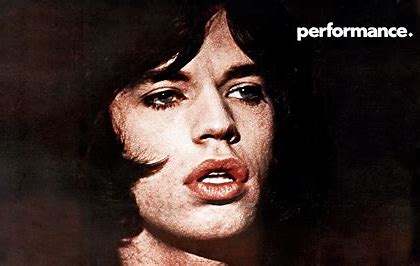
Donald Cammell and Nicolas Roeg
LGBTQ+ CHARACTERS
*Chas (James Fox)
*Turner (Mick Jagger)
*Pherber (Anita Pallenberg)
This psychedelic ménage à trois involving a gangster (James Fox), a reclusive rock star (Mick Jagger), and the lady he lives with (Anita Pallenberg), was made in 1968 but held back from release by Warner Bros. because of its sexual content and graphic violence. And, although the reviews were awful on release, the film has grown in stature over the years, and rightly so.
With obvious references to the Harold Pinter/ Joseph Losey masterpiece “The Servant,” the casting of the boyish Fox (who also starred in “The Servant”) opposite the androgynous Jagger (slipping into Dirk Bogarde’s shoes) works, the latter playing the role of a jaded rock star to perfection.
There will always be an argument about who was the real auteur behind the camera. Nicolas Roeg, one of the few great cinematographers (“The Masque of the Red Death,” “Petulia”), to transition to the great director (“Walkabout,” “Don’t Look Now”) is the obvious choice. Unfortunately, Donald Cammell’s post- “Performance” career was a series of failed projects (many involving Marlon Brando), with only the less than stellar “Demon Seed” (1997), White of the Eye” (1987), and “Wild Side” (1995, with the director’s cut in 1999) seeing completion before he died in 1996. As an iconoclast and a Hollywood outsider, however, he has his champions.
The Movie is based on an “original” screenplay by Cammell – see “The Servant” in Essay One on Queer Cinema.
NOW STREAMING ON AMAZON PRIME, APPLE TV+, YOUTUBE
17. Women in Love (1970)
B-
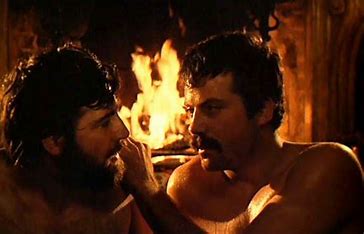
Ken Russell
LGBTQ+ CHARACTER
*Rupert Birkin (Alan Bates)
LGBTQ+ ACTOR
ACTOR: Alan Bates
LGBTQ+ SCREENWRITER
Larry Kramer
Future gay activist Larry Kramer’s (founder of both GMHC and ACT UP) adaptation of D.H Lawrence’s 1920 novel was an enormous critical and commercial success, earning four Oscar Nominations:
- Best Actress: Glenda Jackson (won).
- Best Director: Ken Russell (nominated).
- Best Adapted Screenplay: Larry Kramer (nominated)
- Best Cinematography: Billy Williams (nominated).
The film takes place in 1920 in the midlands mining town of Beldover. Two sisters, Ursula (Jennie Lindon) and Gudrun (Glenda Jackson) discuss marriage on their way to the wedding of Laura Crich, daughter of the town’s wealthy mine owner. At the village church, a particular wedding party member fascinates each sister – Gudrun by Laura’s brother, Gerald (Oliver Reed), and Ursula by Gerald’s best friend, Rupert Birkin (Alan Bates). Ursula is a school teacher, and Rupert is a school inspector; she remembers his visit to her classroom, interrupting her botany lesson to discourse on the sexual nature of the catkin. A mutual friend later brings the four together, and as Jennie and Rupert start dating, so do Gudrun and Gerald.
What makes this a queer film is the famous nude wrestling scene by Firelight between Redd (Gerald) and Bates (Rupert). Rupert enjoys their closeness and says they should swear to love each other. Still, Gerald cannot understand Rupert’s idea of wanting to have an emotional union with a man and an emotional and physical union with a woman.
Oliver Reed would refer to this scene – his apotheosis on film – in every one of his drunken talk show appearances on both sides of the Atlantic for the next thirty years.
NOT AVAILABLE FOR STREAMING. THE DVD IS CURRENTLY NOT AVAILABLE FROM AMAZON.
18. There Was a Crooked Man (1970)
B+
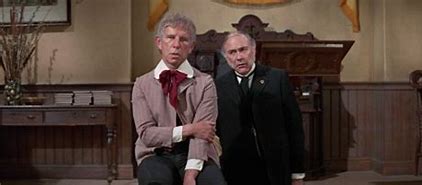
Joseph L. Mankiewicz
LGBTQ+ CHARACTERS
*Dudley Whiner (Hume Cronyn)
*Cyrus McNutt (John Randolph)
Well-Adjusted Gay Couple, Arizona Territory 1883.
The “marriage” of Hume Cronyn’s Mr. Whiner and John Randolph’s Mr. McNutt in JLM’s “There Was a Crooked Man” is Hollywood‘s first presentation of a happy and “well-adjusted” gay couple. Yes, they fight and bicker all the time. However, it is plain to see that they are madly in love with each other. No, Cronyn and Randolph are not in We-Ho or the Hamptons. They are in a feeble excuse for jail or, as Scarlet O’Hara would put it, a horse jail! We are in the Arizona territory circa 1883. The main plot involves a $500,000 loot hidden by Kirk Douglas, who somehow also ends up in said jail and who is being hunted by Henry Fonda‘s Sheriff Woodward W. Lopeman.
This was director Joe Mankiewicz’s only Western, and it is a marvelous ride with a witty, intelligent script by David Newman and Robert Benton. The boys were fresh from their triumph with “Bonnie and Clyde,” and every word was savored.
However, in many ways, it’s like Mankiewcz has been transported back to an alternate “All About Eve,” with Cronyn and Randolph taking over from Bette Davis and Thelma Ritter, respectively. Two of the greatest character actors in Hollywood history, they play their roles with great knowingness and respect, all the while being brilliantly funny. Cheers!
NOW STREAMING ON Amazon Prime Video, Apple TV, YOUTUBE
19. The Boys in the Band (1970)
A
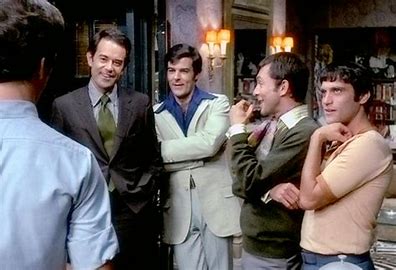
William Friedkin
LGBTQ+ CHARACTERS
*Michael (Kenneth Nelson)
*Harold (Leonard Frey)
*Emory (Cliff Gorman)
*Donald (Frederick Colms)
*Hank (Laurence Luckinbill)
*Larry (Keith Prentice)
*Cowboy Tex (Robert La Tourneaux)
*Bernard (Reuben Greene)
*Alan McCarthy (Peter White)
LGBTQ+ ACTORS | SCREENWRITER | SOURCE MATERIAL
ACTOR: Kenneth Nelson (RIP 1993 AIDS-related illness)
ACTOR: Leonard Frey (RIP 1988 AIDS-related illness)
ACTOR: FREDERICK COLMS (RIP 1992 AIDS-related illness)
ACTOR: Robert La Tourneaux (RIP 1986 AIDS-related illness)
ACTOR: Keith Prentice (R.I.P. 1992 AIDS-related illness)
SCREENWRITER: Mart Crowley
SOURCE MATERIAL: Mart Crowley (based on his play)
As we saw in the 2020 remake, Mart Crowley’s play “The Boys in the Band” has stood the test of time beautifully. The original adaption, directed by William Friedkin before he made “The French Connection,” “The Exorcist,” and, unfortunately, “Cruising,” is essential viewing for every gay man. The standouts are Kenneth Nelson, Leonard Frey, and Cliff Gorman, who is stunningly good as Emory, and he was straight!
A SOMBER GATHERING
The tragic epilogue is that the five real-life gay actors were all unemployable in major roles after the film’s release – this included Leonard Frey, who was Oscar-nominated for his supporting role in “Fiddler on the Roof” – and all died of AIDS-related illnesses within seven years of one another in the late eighties and early nineties.
NOW STREAMING ON AMAZON PRIME AND APPLE TV+
20. Diary of a Mad Housewife (1970)
A+
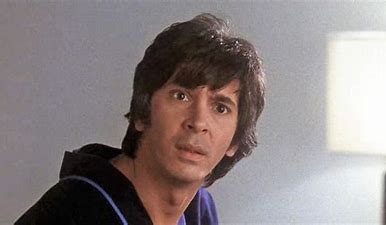
Frank Perry
LGBTQ+ CHARACTER
*George Prager (Frank Langella)
The last movie that director Frank Perry and his screenwriter wife Eleanor made together was their best. An excellent adaptation of the bestselling novel “Diary of a Mad Housewife” by Sue Kaufman, it stars Carrie Snodgress as Tina, an upper-middle-class housewife who gets no respect from either her whining and demanding husband (Richard Benjamin, highly sought after at this point in his career before he turned director) or her arrogant and demanding lover (Frank Langella making his film debut). The movie’s only sour note, a product of its time, is that Langella’s character turns out to be gay, thus explaining all the nasty things he did to Tina throughout their relationship.
CURRENTLY NOT AVAILABLE FOR STREAMING. AVAILABLE TO PURCHASE FROM AMAZON ON DVD AND BLUE-RAY FORMATS.
21. The Private Life of Sherlock Holmes (1970)
A-
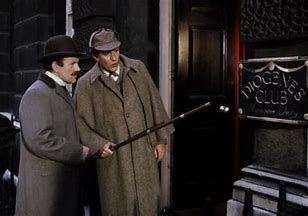
Billy Wilder
LGBTQ+ CHARACTER
*Sherlock Holmes (Robert Stephens)
Director Billy Wilder has said he originally intended to portray Holmes explicitly as a repressed homosexual, stating:
I should have been more daring. I have this theory. I wanted to have Holmes homosexual and not admitting it to anyone, including maybe even himself. The burden of keeping it secret was the reason he took dope.
Billy Wilder: Gemünden, Gerd (2008). A Foreign Affair: Billy Wilder’s American Films. Brooklyn: Berghahn Books. p. 147. ISBN 978-1-78533-475-7.
Billy Wilder’s affectionate look at the Holmes-Watson relationship. It’s August 1887, and Holmes is approached by a famous Russian ballerina, Madame Petrova, who wants to have a child and proposes that Sherlock Holmes be the father, hoping that their offspring will inherit her beauty and Holmes’ intellect. Holmes extricates himself by claiming that Watson (Colin Blakely) is his lover, much to the doctor’s embarrassment.
This is, without a doubt, the underrated gem in the Wilder canon. Excellent work by Robert Stephens (his best screen performance) and Blakely, while Geneviève Page gives a beautiful melancholy performance as a German spy who is secretly in love with Holmes. The Russian Ballet/Tchaikovsky sequence is a classic and represents Wilder at best.
Original screenplay by Wilder and I. A. L. Diamond
NOW STREAMING ON AMAZON PRIME VIDEO, APPLE TV+, YOUTUBE
22. The Conformist (1970)
A+
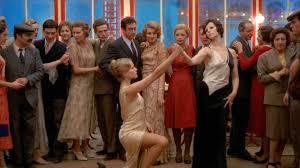
Bernardo Bertolucci
LGBTQ+ CHARACTER
*Marcello (Jean-Louis Trintignant)
*Anna (Dominique Sanda)
*Lino the chauffer (Pierre Clementi)
LGBTQ+ PRODUCTION DESIGNER
Ferdinando Scarfiotti
One of the most influential films ever made, Bernardo Bertolucci’s “The Conformist” tells the story of a sexually repressed gay man who, because of his relationship with a household servant in his youth, desperately wants to conform in society to the point of working for Mussolini’s Fascist secret police.
The film left an indelible impression on the young directors of the New Hollywood of the early 1970s, particularly Francis Coppola’s “Godfather” Trilogy and Paul Scrader’s “American Gigolo” and Mishima.” Cinematographer Vittorio Storaro’s visuals were immensely influential on Gordon Willis and John Bailey, and Schrader used Bertolucci’s production designer, Ferdinando Scarfiotti, as his visual consultant on all his early movies. Using Art Deco, the dominant architecture of the day, as a backdrop to the film’s narrative, the partnership of Bertolucci, Storaro and Scarfiotti changed the look of Cinema forever.
It’s 1938, in Paris, and Marcello Clerici (Jean-Louis Trintignant) leaves his wife Giulia (Stefania Sandrelli) in their hotel room and finalizes his preparations to assassinate his former college professor, Luca Quadri (Enzo Tarascio), an anti-Fascist who has fled Italy for safety reasons. From here, the film goes into a series of flashbacks. In one, we see Marcello as a boy being picked up from school by the family chauffeur Lino (Pierre Clementi). Lino is both a Fascist and a pedophile, and he tries to rape Marcello. There is a gun, Marcello shoots Lino and runs away, thinking that he has committed murder. During their visit to Paris from Italy, the two couples have become friendly, with Marcello having a romantic fling with Quadri’s wife Anna (Dominique Sanda) who in turn has a crush on Giulia. The two women have a slow dance with one another, which is another seminal moment in Cinema. Nothing like this had been seen since the days of Marlene Dietrich. From today’s perspective, the scene reeks of the male gaze, but it still packs a punch.
Bertolucci is a contradiction. His tastes were catholic, but he was raised Catholic. And while he revels in the risque value of a lesbian dance, he cannot quite get his head around homosexuality and its perceived relationship to pedophilia and Fascism. The conformist conforms because of his sexuality, and when Fascism collapses, he has nothing left.
Adapted by Bertolucci from the novel “The Conformist” by Alberto Moravia. Oscar nomination for Best Adapted Screenplay.
NOW SHOWING ON AMAZON PRIME, APPLE TV+ AND YOUTUBE
23. Vanishing Point
C-
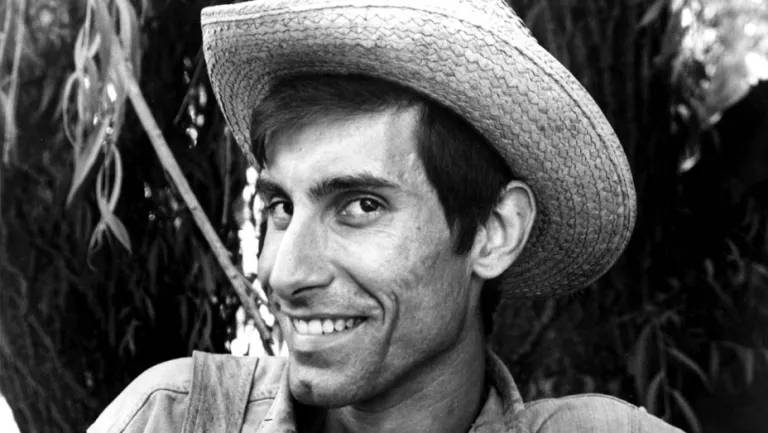
Richard C. Sarafian
LGBTQ+ CHARACTERS
*Male Hitchhiker #1 (Anthony James)
*Male Hitchhiker #2 ( Arthur Malet)
LGBTQ+ ACTOR
Arthur Malet
Director Richard C. Sarafian’s film stars Barry Newman as a disaffected ex-policeman and race car driver delivering a muscle car cross-country to California at high speed while being chased by the police. Along the way, he meets various characters, some more interesting than others. In the movie’s most memorable yet nauseating scene, he is briefly held captive at gunpoint by two exceptionally sleazy-slimy Queers played by gay British actor Arthur Malet (“Mary Poppins”) and the exceptionally creepy Anthony “the skull” James, whose visage is pictured above. James, who comes across as pure evil, had just come off a memorable role as the diner counterman in “In the Heat of the Night,” which, strangely enough, also featured Malet as the undertaker. After a few minutes, Newman overpowers these pitiful excuses for human beings, resulting in a knee-jerk standing ovation by the spoon-fed audience. The cinematography by John Alonzo (“Chinatown”) is praiseworthy, and the movie has developed a cult following over the years. Original screenplay by Guillermo Cabrera Infante (credited as Guillermo Cain) from a story outline by Malcolm Hart. The film also stars Charlotte Rampling.
CURRENTLY NOT AVAILABLE FOR STREAMING. AVAILABLE TO PURCHASE FROM AMAZON ON DVD.
24. Death in Venice (1971)
A-
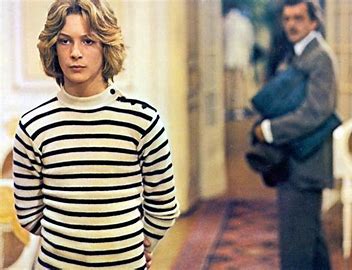
Luchino Visconti
LGBTQ+ CHARACTER
*Gustav von Aschenbach (Dirk Bogarde)
LGBTQ+ DIRECTOR | SCREENWRITER
Luchino Visconti
LGBTQ+ ACTOR
Dirk Bogarde
LGBTQ+ PRODUCTION DESIGNER
Ferdinando Scarfiotti
WOULDN’T YOU JUST DIE WITHOUT MAHLER?
After “The Damned,” director Luchino Visconti and actor Dirk Bogarde collaborated on adapting the Thomas Mann 1912 novella “Death in Venice.” The result is a gorgeous, if somewhat slow-moving, tour de force. Visconti’s (and co-writer Nicola Badalucco) brilliant idea was changing the leading character, Gustav von Aschenbach’s profession, from a writer to a composer, thus opening up the movie to the magnificent Gustav Mahler Adagietto from his Symphony No.5. Aschenbach has come to Venice to recover from personal and artistic stresses. Instead, overtaken by an unrequited passion for an unattainable boy, he courts death by failing to heed warnings about the cholera epidemic sweeping the city. Tadzio, the composer’s object of beauty, was presented to the world after a massive Visconti-lead talent search. The actor’s name is Bjorn Andresen, who, contrary to general opinion, did NOT vanish from the face of the Earth after the movie was completed. He was recently seen, to great effect, in Ari Aster’s “Midsommar”.
NOW STREAMING ON AMAZON PRIME, APPLE TV+, YOUTUBE
25. The Garden of the Finzi Continis (1971)
A-
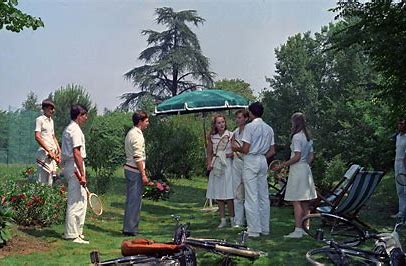
Vittorio De Sica
LGBTQ+ CHARACTER
*Alberto Finzi Contini (Helmut Berger)
LGBTQ+ ACTOR
Helmut Berger
LGBTQ+ SOURCE MATERIAL
Giorgio Bassani (based on his novel)
Directed by Vittorio De Sica, “The Garden of the Finzi Continis” is based on the semi-autobiographical novel by gay Italian writer Giorgio Bassani. His character in the book and the film, Alberto, is played by gay actor Helmut Berger fresh from Visconti’s “The Damned” and it’s a very different performance. Alberto is clearly in love with his friend Malnate, a young man with imposing physicality and communist leanings, played by Fabio Testi, and he delights in his company. He even reacts jealously when he senses that his sister Micol (Dominique Sanda) and Malnate may be getting closer. Will Alberto’s love be reciprocated? Of course, the Finzi Contini’s are living on borrowed time. Beyond their wall-off compound, the Jews of Mussolini’s Italy are being rounded up with an express ticket to the concentration camps.
Oscar-nominated adapted screenplay by De Sica and Ugo Pirro.
NOW STREAMING ON AMAZON PRIME AND APPLE TV+, YOUTUBE
26. Sunday Bloody Sunday (1971)
A
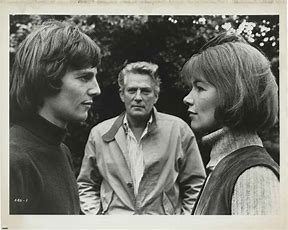
John Schlesinger
LGBTQ+ CHARACTERS
*Daniel Hirsh (Peter Finch)
*Bob Elkin (Murray Head)
LGBTQ+ DIRECTOR
John Schlesinger
FEATURES THE FIRST AFFECTIONATE ONSCREEN KISS BETWEEN TWO MEN IN A TALKING MOTION PICTURE
In “Sunday Bloody Sunday,” Murray Head plays a free-spirited bisexual who is having simultaneous relationships with a divorced recruitment consultant (Glenda Jackson) and a gay Jewish doctor (Peter Finch). Although you always feel that Glenda’s character will “win out,” Peter Finch gives a beautiful, thoroughly convincing performance. He is also one of the first gay characters on film to be comfortable in his skin. Compared to Joe Buck and Ratso Rizzo in Schlesinger’s previous film “Midnight Cowboy,” Finch’s doctor is positively walking on sunshine. He also gets an excellent monologue at the film’s end – “I am happy, apart from missing him” – which is spoken directly to the camera. It’s an acting tour de force that has never been bettered. Look out for Daniel Day-Lewis in a small role.
Original, Oscar-nominated screenplay by Penelope Gilliatt.
NOW STREAMING ON AMAZON PRIME, APPLE TV+, YOUTUBE (SCREENPIX)
27. The Anderson Tapes (1971)
D
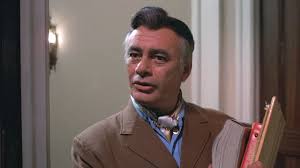
Sidney Lumet
LGBTQ+ CHARACTER
*Haskins (Martin Balsam)
FAIRY QUEEN NUMBER TWO
Just three years before they made their landmark gay movie “Dog Day Afternoon,” director Sidney Lumet and writer Frank Pierson gave us a nasty gay stereotype in Haskins (played by heterosexual actor Martin Balsam), an antique dealer (of course!) who helps a just-out-of-jail Sean Connery carry out the robbery of a luxury apartment building – his job is to show, with a very limp wrist, his fellow robbers the best pieces to steal. Hamming it up and mincing all over the place, this is a cringe-worthy performance made all the worse by the fact that the character is rarely referred to by his given name, just “The Fag.” As for the movie, it’s a bore – its only claim to fame is the credit; “Introducing Christopher Walken,” who makes his film debut here.
NOW STREAMING ON AMAZON PRIME, APPLE TV, YOUTUBE
28. Cabaret (1972)
A+
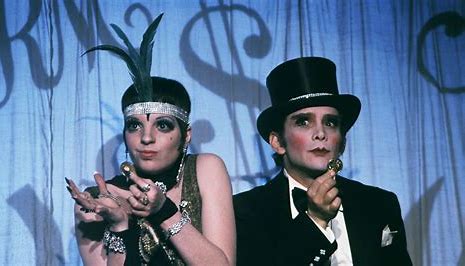
Bob Fosse
LGBTQ+ CHARACTERS
*Brian (Michael York)
*Baron Maximillian (Helmut Griem)
LGBTQ+ SOURCE MATERIAL |MUSIC ARRANGEMENT | SONGWRITERS (MUSIC &LYRICS)
SOURCE MATERIAL: Christopher Isherwood (based on his book “Berlin Stories”)
SOURCE MATERIAL: John Van Druton (based on his play “I am a Camera”)
MUSIC ARRANGEMENT: Ralph Burns
SONGS (MUSIC): John Kander
SONGS (LYRICS) Fred Ebb
WINNER OF EIGHT OSCARS, THE MOST ACCUMULATED BY A FILM THAT DID NOT WIN BEST PICTURE
Fuck Maximillian !
BRIAN to SALLY – CABARET
I do!
SALLY to BRIAN – CABARET
So do I!
BRIAN to SALLY – CABARET
For a gay man, these are some of the sweetest words ever spoken on film.
The setting is Berlin in 1931 in the closing days of the Weimer Republic. The Nazi party will be in power in less than two years. We are with Brian (Michael York), the delectable Miss Sally Bowles (Liza Minnelli), and Baron Maximilian (Helmut Griem).
The film is based on the 1966 Broadway musical “Cabaret” by Kander and Ebb, which was adapted from Christopher Isherwood’s semi-autobiographical novel “The Berlin Stories” (1945) and the John Van Druten play “I Am a Camera” (1951), which was itself adapted from the same work. With Bob Fosse’s revolutionary choreography and direction and Liza’s stunning performance, this is one of the best films ever made.
Don’t forget Joel Grey’s irrepressible host at the Kit Kat Club and those amazing Kander and Ebb songs.
Adapted by J. Presson Allen from all three sources.
OSCAR 1972
Best Film: Cy Feuer producer (Nominated)
Best Director: Bob Fosse (WIN)
Best Actress: Liza Minnelli (WIN)
Best Supporting Actor: Joel Grey (WIN)
Best Adapted Screenplay: Jay Presson Allen (Nominated)
Best Cinematography: Geoffrey Unsworth (WIN)
Best Editing: David Bretherton (WIN)
Best Production Design: Hans Jurgen Kiebach and Rolf Zehetbauer (Art Direction) | Herbert Strabel (Set Direction) (WIN)
Best Music Adaptation: Ralph Burns (WIN)
Best Sound: Robert Knudson and David Hildyard (WIN)
Of its ten nominations, it won eight, losing to “The Godfather” in the Best Film and Adapted Screenplay categories. Astonishingly, costume designer Charlotte Fleming was not nominated for her incredible wardrobe. Some say it was because she was based in Berlin and not Hollywood. However, this also applied to the Production Design team, and it did not stop them from not just getting nominated but also winning. Michael York was also unlucky not to be nominated (he never has). Still, it was a particularly competitive year in the Best Actor category, with even Al Pacino being ridiculously moved into the Best Supporting category. The eventual likeup consisted of Marlon Brando (“The Godfather”), Laurence Olivier (“Sleuth”), Michael Caine (“Sleuth”), Peter O’Toole (“The Ruling Class”) and Pete Winfield (“Sounder”). Brando won the award, which he refused sending Native American actress Sacheen Littlefeather as his proxy.
NOW STREAMING ON AMAZON PRIME, APPLE TV+, YOUTUBE
29. Pink Flamingos (1972)
Rated C (Solo)
High Camp at a Midnight Screening
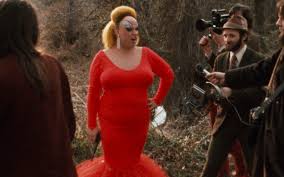
John Waters
LGBTQ+ CHARACTER
*Babs Johnson (Divine)
LGBTQ+ DIRECTOR
John Waters
LGBTQ+ ACTOR
Divine né Harris Glenn Milstead
After two under-the-radar curiosities, John Waters and his star, the fabulous drag queen Divine (né Harris Glenn Milstead), arrived on the scene in the fall of 1972 with “Pink Flamingos,” a very sick-and-twisted black comedy and the first part of his “Trash Trilogy”, which also includes “Female Trouble” (1974) and “Desperate Living” (1977). Divine plays a criminal named Babs Johnson, who is proud to be the filthiest person alive. While living in a trailer with her mother, Edie (Edith Massey), and companion Cotton (Mary Vivian Pearce), she is confronted by the Marbles (David Lochary and Mink Stole), a pair of criminals envious of her reputation who try to outdo her in filth. The scene in which Divine eats dog poop is not for the faint at heart.
Like “Valley of the Dolls” and “Rocky Horror,” the ONLY way to see “Pink Flamingos” is as a GROUP EXPERIENCE with a very gay crowd. Like the majority of his films, “Pink Flamingos” is set in Waters’s hometown of Baltimore, which he affectionately calls the “white trash capital of the world.”
Original screenplay by Waters.
The Dreamlanders
This is just a partial list of John Waters’s group of stock players known as “The Dreamlanders.” Most of the original bunch lived in the Baltimore area. Divine, David Lochary, Edith Massey, Mink Stole, Mary Vivian Pearce and Rikki Lake were essential to Water’s transition from cult favorite to mainstream success with “Pink Flamingos,” “Polyester,” and particularly “Hairspray.”
| Actor and/or Crew | Pink Flamingos (1972) | Female Trouble (1974) | Desperate Living (1977) | Polyester (1981) | Hairspray (1988) | Cry-Baby (1990) | Serial Mom (1994) |
|---|---|---|---|---|---|---|---|
| Divine | Yes | Yes | Yes | Yes | |||
| David Lochary | Yes | Yes | |||||
| Mary Vivian Pearce | Yes | Yes | Yes | Yes | Yes | Yes | Yes |
| Edith Massey | Yes | Yes | Yes | Yes | |||
| Mink Stole | Yes | Yes | Yes | Yes | Yes | Yes | Yes |
| Patty Hearst | Yes | Yes | |||||
| Ricki Lake | Yes | Yes | Yes | ||||
| Traci Lords | Yes | Yes |
“Pink Flamingos” is not available for streaming. However, the DVD can be purchased on Amazon.
30. The Bitter Tears of Petra Von Kant (1972)
A+
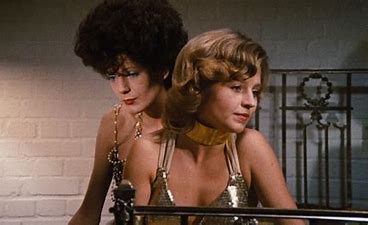
Rainer Werner Fassbinder
LGBTQ+ CHARACTERS
*Petra von Kant (Margit Carstensen)
*Marlene (Irm Hermann)
*Karin Thimm (Hanna Schygulla)
LGBTQ+ PRODUCER | DIRECTOR | SCREENWRITER
Rainer Werner Fassbinder
LGBTQ+ PRODUCTION DESIGNER
Kurt Raab
In the city late tonight
Tom Robinson “Atmospherics” from the 1984 album “War Baby”
Double feature, black and white (sic)
Bitter Tears and Taxi to the Klo
Find a bar, avoid a fight
Show your papers, be polite
Walking home with nowhеre else to go
QUEER CINEMA MEETS NEW GERMAN CINEMA
AFTER FASSBINDER’S UNTIMELY DEATH IN 1982, AN ENTIRE MICROECONOMY OF GERMAN FILMMAKING COLLAPSED OVERNIGHT
SORRY TOM ROBINSON. BOTH “BITTER TEARS’ AND “TAXI ZUM KLO” ARE IN COLOR!
A landmark in both Queer Cinema and the New German Cinema, writer/director/producer/ Rainer Werner Fassbinder’s examination of the dynamics of a lesbian love triangle was shot, in true Fassbinder fashion, over a few hours in der Wunderkind’s apartment. However, “Petra Von Kant” is as influential today as in 1972. Based on Fassbinder’s play, it takes place entirely in the home of its eponymous heroine, an outrageously spoilt fashion designer. When a new sexually fluid young thing arrives from Australia (Hanna Schygulla), Petra (Margit Carstensen) begins to turn her attention away from her loyal friend and caretaker Marlene (Irm Hermann), leading the viewer down avenues of emotional codependency you never knew existed. If the plot sounds familiar, it was remade in 1998 by Lisa Cholodenko as “High Art” with Ally Sheedy, Patricia Clarkson, and Radha Mitchell.
Singer/songwriter Tom Robinson immortalized the movie in his song “Atmospherics” (co-written with Peter Gabriel) from his 1984 album “Hope and Glory.” He pairs it with another gay classic, Frank Ripploh’s “Taxi zum Klo,” from 1981, which is outside the scope of this article and will be covered another day. Presumably, for the purpose of rhyming, Gabriel and Robinson say that both movies are in black and white. Sorry, guys, they are both in color.
Cinematography by Michael Ballhaus. Production Design by Kurt Raab. Maja Lemcke designed the costumes, and they are astonishing.
NOW STREAMING ON AMAZON PRIME, APPLE TV+, MAX (YOUTUBE), THE CRITERION COLLECTION
seventeen Fassbinder Films Rated!
He was astonishingly productive over a period of FOURTEEN years.
| NUMBER | YEAR | FILM TITLE | ACTORS | THEBROWNEES RATING | CINEMATOGRAPHER | NOTES |
| 1 | 1969 | Love is Colder than Death | Ulli Lommel Hanna Schygulla Ingrid Caven | B- | Dietrich Lohmann | Ingrid Caven was married to Fassbinder from 1970-1972 Fassbinder’s first collaboration with composer and one-time lover Peer Raben |
| 2 | 1970 | Why Does Herr R. Run Amok? | Kurt Raab Ingrid Caven | B | Dietrich Lohmann | Co-directed and co-written by Michael Fengler |
| 3 | 1971 | Beware a Holy Whore | Hanna Schygulla Eddie Constantine | B- | Michael Ballhaus | |
| 4 | 1972 | The Merchant of Four Seasons | Hans Hirschmuller Hanna Schygulla Irm Hermann Kurt Raab | B+ | Dietrich Lohmann | |
| 5 | 1972 | The Bitter Tears of Petra von Kant | Margit Carstensen Hanna Schygulla Irm Hermann Eva Mattes | A+ | Michael Ballhaus | Fassbinder’s masterpiece |
| 6 | 1974 | Ali: Fear Eats the Soul | Brigitte Mira El Hedi ben Salem Barbara Valentin Irm Hermann | A- | Jurgen Jurges | |
| 7 | 1974 | Effi Briest | Hanna Schygulla | B- | Dietrich Lohmann | |
| 8 | 1975 | Fox and His Friends | Michael Rainer Fassbinder Karlheinz Bohm | B+ | Michael Ballhaus | |
| 9 | 1977 | The Stationmaster’s Wife | Elizabeth Trissenaar Kurt Raab Udo Keir | A- (the uncut TV version) | Michael Ballhaus | Made for German TV Later, an inferior cut version was released in cinemas. Alternative title “Bolweiser.” The first Fassbinder movie to be edited by his partner for the last five years of his life, Juliane Lorenz. |
| 10 | 1978 | Despair | Dirk Bogarde | C | Michael Ballhaus | Screenplay by Tom Stoppard Based on the novel by Vladimir Nabokov Fassbinder’s first English-language film. |
| 11 | 1978 | In the Year of 13 Moons | Volker Spengler Ingrid Caven | C | Rainer Werner Fassbinder | Made in response to the suicide of Fassbinder’s lover Armin Meier |
| 12 | 1979 | The Marriage of Maria Braun | Hanna Schygulla | B | Michael Ballhaus | |
| 13 | 1980 | Berlin Alexanderplatz | Gunther Lamprecht Hanna Schugulla Elizabeth Trissenaar Barbara Sukowa | A- (the uncut TV version) | Xaver Schwarzenberger | 14-part West German TV series set in 1920s Berlin and adapted by Fassbinder from the novel by Alfred Doblin. Released theatrically in the United States in 1983. Available on the Criterion Collection. |
| 14 | 1981 | Lili Marleen | Hanna Schygulla Giancarlo Giannini Udo Kier | B- | Xaver Schwarzenberger & Michael Ballhaus | The first film in the BRD trilogy. |
| 15 | 1981 | Lola | Barbara Sukowa Armin Mueller-Stahl | C- | Xaver Schwarzenberger | The third film in the BRD trilogy. This is a loose adaptation of Heinrich Mann’s “Professor Unrat,” which Josef von Sternberg previously adapted as “The Blue Angel.” |
| 16 | 1982 | Veronika Voss | Rosel Zech | A | Xaver Schwarzenberger | The second film of the BRD trilogy. |
| 17 | 1982 | Querelle | Brad Davis Franco Nero | C | Xaver Schwarzenberger | Based on “Querelle of Brest” by Jean Genet |
31. Pete ‘n’ Tillie (1972)
B-
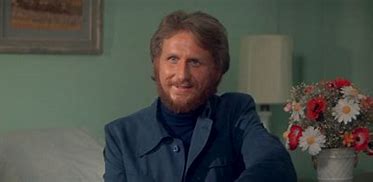
Martin Ritt
LGBTQ+ CHARACTER
*Jimmy Twitchell (René Auberjonois)
Tillie (Carol Burnett) is single in her late thirties. At a party, she is introduced to Pete (Walter Matthau), a confirmed bachelor. On their first date, given a choice of beverages from Burnett, Matthau answers, “Whatever’s the most trouble.” It’s the best line in the movie, and it occurs too early.
Next thing you know, they are a married couple and are double blessed – or have a good fortune – since Pete is an avowed Atheist – when Tillie gives birth to a little boy they call Robbie (Lee Montgomery). The years go by, and although they have problems, the marriage is stable until one day, when he is nine, Robbie is diagnosed with a fatal illness.
Both Burnett and, particularly, Matthau were at the top of their game when this movie came out in 1972. Matthau’s next film, Don Siegel’s “Charley Varrick,” contains his most outstanding performance. However, “Pete’ n’ Tillie” is flat. The two stars seem afraid to let go, and the script gives them nothing to hold on to. It looks and feels like the TV movie of the week when that term was used in a derogatory sense.
They each deal with the tragedy in their own way. Pete moves out, starts having affairs, and drowns his sorrows in alcohol. Tillie finds comfort in the company of her best friend, Gertrude, played by Geraldine Page. This was Page’s fifth of her eight Oscar nominations. She gets a lot of mileage out of the fact that Gertrude never divulges her age. Then there is the long-drawn-out catfight with Burnett, which inspired the Anne Bancroft-Shirley MacLaine brawl in “The Turning Point” five years later. However (and I am a huge fan), she did not deserve the nod. It’s one of her least impressive performances. And then there is her other best friend, Jimmy, the film’s token gay guy, played by René Auberjonois, who had one of the most memorable names in cinema.
There is nothing special about Jimmy except that he knows Gertrude’s actual age (well, he is the token gay guy). Meanwhile, director Martin Ritt and screenwriter Julius J. Epstein (of “Casablanca” fame) make him a kind of saint with no life. All he wants to do is take care of Tillie, and he even offers to marry her if that would make her happy (she wisely refuses). It’s not precisely a gay stereotype, but it’s a bit one-dimensional.
Original, Oscar-nominated screenplay by Julius J. Epstein.
NOW STREAMING ON YOUTUBE
32. Play It As It Lays (1972)
C-
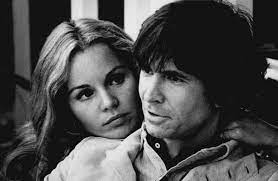
Frank Perry
LGBTQ+ CHARACTER
*BZ. Mendenhall (Anthony Perkins)
LGBTQ+ ACTOR
Anthony Perkins
Director Frank Perry’s first film following his divorce from screenwriter wife Eleanor, and she is sorely missed. His choice was Joan Dideon’s novel of the same name.
Adaptation: Perry with Didion’s husband, John Gregory Dunne.
Production: Perry with Didion’s brother-in-law Dominick Dunne
Tuesday Weld’s Maria is a movie actress who strolls on the grounds of a mental hospital, recalling the traumatic events that led to her breakdown. She is married to an unfaithful, self-engrossed director (Adam Roarke) who neglects her. Following a series of one-night stands, she becomes pregnant. Her husband divorces her, and she has an illegal abortion. Maria’s only friend is B.Z., a homosexual movie producer played by Anthony Perkins. World-weary, he tells Maria that he has discovered the meaning of life is nothing. He invites her to commit suicide with him. However, she decides to live and cradles him as he dies after overdosing on sleeping tablets.
Unfortunately, despite a good performance by Weld, the film only comes alive when she drives endlessly around LA’s spectacular freeways, which, in the 1970s, were considered one of the city’s great engineering and architectural achievements. Perkins is passable in the underwritten role of another doomed homosexual.
NOW STREAMING ON YOUTUBE.
33. Summer Wishes, Winter Dreams (1973)
B-
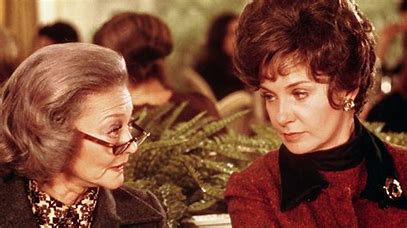
Gilbert Cates
LGBTQ+ CHARACTER
*Bobby Walden (Ron Rickards)
In 1973, four years before we became accustomed to Woody Allen presenting us with various versions of Manhattan in all his movies, from “Annie Hall” (1977) to “Melinda and Melinda” (2004), Gilbert Cates gave us a very Allenesque avant la lettre film “Summer Wishes, Winter Dreams.” A Manhattan where our leading lady shops at Saks, goes to excellent restaurants, and whose idea of a pleasant afternoon is seeing a screening of Ingmar Bergman’s “Wild Strawberries” at a revival house with her mother.
That person is Rita Walden, played beautifully by Joanne Woodward in what may be her best performance (third Oscar nomination and the second of her three NYFCC awards for Best Actress). Rita is about to go through a midlife crisis triggered by the death of said mother (a marvelous Sylvia Sidney who was also Oscar-nominated). There’s her mother’s estate to be taken care of. Then, Rita questions her choice to marry her ophthalmologist husband, played by Martin Balsam, in a beautifully understated performance – so different from “The Fag” in the previous year’s “The Anderson Tapes” – that dominates the latter half of the film.
Her son Bobby (Ron Rickards), who has moved incommunicado to Amsterdam, is gay. Bobby only gets one scene, and it’s of the very creepy homophobic variety. Woodward accidentally intrudes on a potentially intimate moment between him and his “friend” in Bobby’s bedroom. Bobby behaves abominably in that nasty way that only gay male characters can muster in Hollywood films. All the while, his friend, a ballet dancer (of course!), keeps doing his little pirouettes and demi plies, maintaining eye contact with Joanne in a vaguely confrontational manner. Well! This flashback occurs as part of Rita’s dream after she nods off at the above “Wild Strawberries” screening.
The original screenplay is by Stewart Stern, who dealt more sympathetically with homosexuality in films such as Rebel Without a Cause (original) and Rachel, Rachel (adapted).
NOW STREAMING ON YOUTUBE.
34. The Day of the Jackel (1973)
A
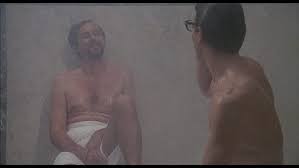
Fred Zinnemann
LGBTQ+ CHARACTER
*Jules Bernard (Anton Rodgers)
LGBTQ+ ACTOR
Derek Jacobi
What we have here is another example of a gay character whose sole purpose in the movie is to be killed.
In director Fred Zinnemann’s superb edge-of-your-seat 142-minute adaptation of Frederick Forsyth’s 1971 novel of the same name, two innocent people are murdered as the French and English police – led by French actor Michel Lonsdale – try desperately to find “The Jackal” of the title. That is the code name of the hit man for hire who plans to assassinate President Charles de Gaulle as he hands out medals on the Place du 18 juin 1940, in Paris, on Liberation Day, 1963. The first murder results from a heterosexual affair, so it gets more attention. Also, this first victim is an upper-class French woman, Madame de Montpellier, who is played by the gorgeous French star Delphine Seyrig. At the peak of her stardom following “Last Year at Marienbad,” “Muriel,” and “The Discreet Charm of the Bourgeoisie” with “Jean Dielman” on the horizon.“The Jackal,” brilliantly played by Edward Fox, meets her at an expensive hotel. Later, as the police close in around him, he follows her to her mansion, and after she tells him that the police have been to see her, he kills her.
The second murder results from a homosexual affair, so it gets less screen time. Back in Paris, with the murder of Madame de Montpellier on the news stations and the police now knowing his nom de guerre and having alerted all of the hotels in Paris, “The Jackal” knows that he must find somewhere else to stay. So, barely escaping the police at the train station, he asks the taxi driver to take him to a Turkish Bath where, as he hoped, he is hit on by a French man named Jules Bernard (played by English actor Anthony “Anton” Rodgers) who invites him back to his home to spend the evening. All seems to go as planned until Jules overhears the newsflash on the television, and like Madame de Montpellier before him, he is immediately dispatched, in his case, to that great gay sauna in the sky.
Our consolation is that Zinnemmann and Rodgers treat him with a modicum of respect – we get a glimpse of his life outside the bathhouse, and Rodgers manages to do his best with his few minutes of screentime. That his murder is a mirror image of Seyrig’s also eases the pain (a little).
Otherwise, I always sit back and enjoy this beautifully made film, which reminds me of what a great director Fred Zinnemmann could be when working with the right material.
Openly gay actor Derek Jacobi is among the marvelous cast, a virtual who’s who of excellent English and French character actors.
Oscar nomination for Best Editing.
NOW STREAMING ON AMAZON PRIME, APPLE TV+, YOUTUBE, BFI CLASSICS.
35. Save the Tiger (1973)
B-
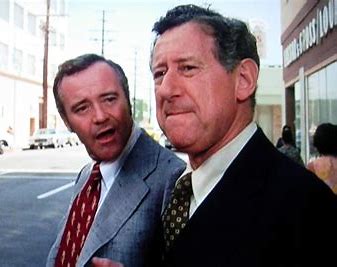
John G. Avildsen
LGBTQ+ CHARACTER
*Rico (Harvey Jason)
FAIRY QUEEN NUMBER THREE
MYER CAN NOT BE IN THE PLAYPEN WITH FAIRIES; EVEN TALENTED FAIRIES
The Year is 1973. The setting is Los Angeles.
Jack Lemmon and Jack Guilford go to see a porn movie at The Mayan, and there is a fashion show at The Biltmore. But the most fascinating thing about this movie is its attitude towards its one gay character. Fifty years ago, if you were gay, the center of the entertainment industry was not a friendly place.
A time capsule. A time capsule of how horrific it was to be a gay man in 1973. The head seamster, Meyer (William Hansen), has been through the Holocaust and pogroms back in the old country. Still, he cannot stand to work with “The Fairy” (heterosexual actor Harvey Jason), the man who has designed the entire collection that Jack Lemmon and his partner Jack Gilford’s financially struggling Los Angeles apparel company Capri Casuals is entirely dependent on to get through the next 12 months. The Oscar-nominated original screenplay is by writer Steve Shagen. An educated Jew, Shagen is in the Stone Age when it comes to a human being who has a different sexual preference than himself. Again, it always amazes me that a tribe whose people have been so oppressed themselves and have such a passion for learning and the arts can be so casually homophobic. Back in the seventies, gay men and women had to endure a parade of dykes and sissies trotted out by those supreme purveyors of Jewish humor Mel Brooks and Neil Simon. However, in “Save the Tiger, “The Fairy” is supposed to be an actual living person. He is a real character treated with absolute contempt by the man who created him. Meyer will not refer to his coworker by his given name, just “The Fairy:
The sad thing is that there is a lot to admire about this movie, which was shot on location in the garment district of LA. Although Lemmon slightly misses the mark, Jack Gilford is superb as the voice of reason, and Thayer David has a few choice moments as the arsonist in the movie theatre balcony with whom Lemmon and Gilford have a clandestine meeting as a porno movie rages in the background.
The director is John G. Avildsen, who would win an Oscar for directing “Rocky.”
NOW STREAMING ON AMAZON PRIME, APPLE TV, YOUTUBE
36. A Touch of Class (1973)
C+
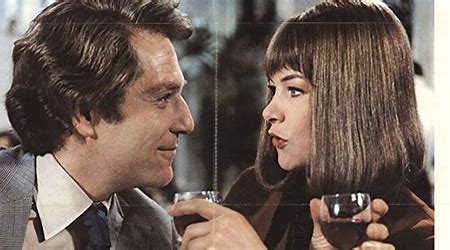
Melvin Frank
LGBTQ+ CHARACTER
*Cecil (Timothy Carlton Congdon Cumberbatch – uncredited)
FAIRY QUEEN NUMBER FOUR
The year is 1973. The setting is London.
Our stars are Glenda Jackson and George Segal in Melvin Frank’s “ A Touch of Class,” a movie that nobody sees today because the bloom has faded from the rose. Jackson’s Oscar for Best Actress is on a par with Jack Lemmon’s Best Actor for “Save the Tiger” that same year – utterly undeserved and the worst of that year’s five choices – Joanne Woodward’s reaction to her being named the winner is priceless. Her character works in the garment industry, so we are on “fairy alert.” And, wouldn’t you know it, one of them does descend on her office just as Segal is visiting. He’s got a swishy fairy attitude, which he unwisely unleashes on Jackson as he minces about her office. His name is Cecil, and he is played, believe it or not, in an uncredited part by Benedict Cumberbatch’s dad, Timothy Carlton Congdon Cumberbatch, who is known professionally as Timothy Carlton. Jackson wonders why a particular document is not typed. The dialogue is as follows:
You know I only type with one finger and (pause), I’ve hurt it
Cecil
Don’t tell me how!
Jackson, dripping contempt.
The Oscar-nominated original screenplay is by Frank and Jack Rose.
NOW STREAMING ON AMAZON PRIME
37. The Last of Sheila (1973)
B
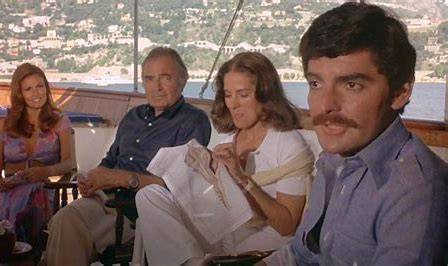
Herbert Ross
LGBTQ+ CHARACTER
*Tom Parkman (Richard Benjamin)
LGBTQ+ DIRECTOR
Herbert Ross
LGBTQ+ SCREENWRITERS
Anthony Perkins
Stephen Sondheim
LGBTQ+ COSTUME DESIGNER
Joel Schumacher
On a one-week Mediterranean pleasure cruise aboard the yacht of movie producer Clinton Greene (James Coburn), the guests include actress Alice Wood (Raquel Welch); her talent-manager husband Anthony Wood (Ian McShane); secretary turned talent agent Christine (Dyan Cannon); screenwriter Tom Parkman (Richard Benjamin) and his wife Lee (Joan Hackett); and film director Philip Dexter (James Mason). The trip is, in fact, a reunion; with the exception of Lee, all were together at Clinton’s home one year before, on the night a hit-and-run resulted in the death of Clinton’s wife, gossip columnist Sheila Greene (Yvonne Romain). Once the cruise is underway, Greene, a parlor game enthusiast, informs his guests that each will be assigned an index card with the following titles: HOMOSEXUAL | SHOPLIFTER | EX-CONVICT | INFORMER |LITTLE CHILD MOLESTER. One of the cards is blank. The object of the game is to discover everyone else’s secret while protecting one’s own.
Anthony Perkins and Stephen Sondheim, who teamed up to write this movie’s original screenplay, were good friends who also liked to throw lavish parlor games in their fabulous Manhattan apartments. They also loved clues, riddles and crosswords, and anyone who has seen old episodes of “Password” on TV can attest to how clever Perkins was with words. Ditto for Sondheim, arguably the greatest wordsmith of the 20th century. Both men were gay, as was the film’s director, Herbert Ross (despite being married to both Nora Kaye and Lee Radziwell). And that massive gay sensibility does come through. The actors are all in good form, with Raquel Welsh being particularly impressive in her one genuinely good film. Dyan Canon also has a great time playing a character that was clearly modeled on uber-talent agent Sue Mengers. The movie ultimately disappoints, however, in that it’s only moderately entertaining. With this level of talent and queerness, we should have had the time of our lives.
The song “Friends” is sung by Bette Midler.
NOW STREAMING ON AMAZON PRIME, APPLE TV+ AND YOUTUBE
38. Freebie and the Bean (1974)
D-
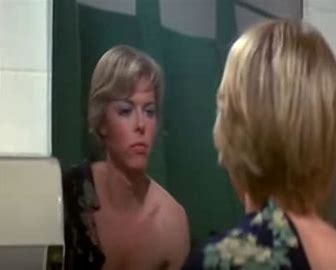
Richard Rush
LGBTQ+ CHARACTER
*The Transvestite (Christopher Morley)
LGBTQ+ ACTOR
ACTOR: Christopher Morley
AUDIENCES CHEER THE DEATH OF THE FAG
Noted female impersonator Christopher Morley may have tried to give his character “The Transvestite” – he is not given a name even though he is the story’s main villain – some semblance of dignity in director Richard Rush’s off-the-scale homophobic/transphobic buddy-cop movie “Freebie and the Bean.” Our heroes, James Caan (“Freebie”) and Alan Arkin (“The Bean” – he is supposed to be Hispanic!), first encounter Morley in a bathtub. He’s preening and lisping, and you can see that he disgusts them. Freebie, who is not on screen five minutes before he utters the word “fag”, clearly has a problem with anything that isn’t macho. However, it’s never clear whether Morley’s character has gender identity issues or just dresses in women’s clothes as a disguise when he is robbing people! After he shoots Bean, seriously injuring him, he is chased by Freebie, who corners him in a public bathroom. They fight it out with Morley, having briefly incapacitated Caan, taking time to look in the mirror and freshen up! Freebie, however, recovers and manages to grab a gun, which he then empties into Morley’s character, where just one bullet would have done. And the audience cheers! Not because of the villain’s demise but because the fag is dead.
Original screenplay by Robert Kaufman from a story by Floyd Mutrux.
Rush later directed a much superior film, “The Stunt Man” (1980), with Peter O’Toole.
NOW STREAMING ON AMAZON PRIME, APPLE TV+ AND YOUTUBE
39. A Very Natural Thing (1974)
D+
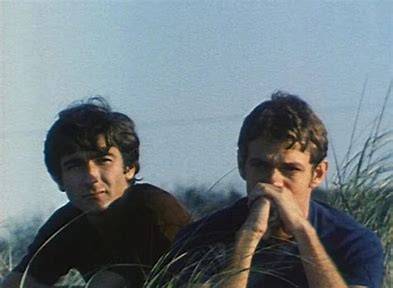
Christopher Larkin
LGBTQ+ CHARACTER
*David (Robert Joel)
LGBTQ+ DIRECTOR | ACTOR
DIRECTOR: Christopher Larkin (RIP 1988: Suicide following the diagnosis of end-stage AIDS)
ACTOR: Robert Joel (RIP 1992: AIDS-related illness)
Christopher Larkin directed and co-wrote this film about a gay man in his late twenties looking for love in mostly the wrong places (in Manhattan and the Hamptons) to market it to general audiences. It didn’t work. Possibly because it was ahead of its time, but mostly because it’s pretty awful. The hackneyed script, the terrible acting, the wall-to-wall padding, and all those dreadful haircuts! The lead character in the film used to be a monk – as was the director – and the opening scene, where he embraces his monastery brothers before leaving them, is the only moment with genuine pathos. There is massive footage of NYC pride parades that lend nothing to the proceedings except to tell us that the director did not have enough material or ideas to fill his movie. Today, it’s nothing more than a failed curiosity. It would be over ten years before such infinitely superior Queer Films as “Buddies” and “An Early Frost” (both in 1985), “Parting Glances” (1986) and “Longtime Companion” (1990) were released. Unfortunately, all of those films showed gay culture in the context of the HIV/AIDS epidemic. Tragically, the lead actor in this movie, Robert Joel, died from an AIDS-related illness at the age of 48 in 1992, while the director took his own life after being told he was in the latter stages of AIDS in 1988. The writer of “The Celluloid Closet,” Vito Russo, who also died from an AIDS-related illness in 1990, has a blink-and-you-will-miss-it cameo appearance in the film.
NOW STREAMING ON FANDOM
40. The Great Gatsby (1974)
B
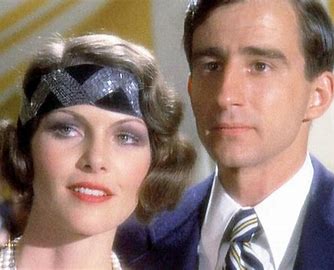
Jack Clayton
LGBTQ+ CHARACTERS
*Nick Carraway (Sam Waterston)
*Jordan Baker (Lois Chiles)
I love to see you at my table, Nick. You remind me of a – of a rose, an absolute rose
Daisy Buchanan – The Great Gatsby
I hope she will be a fool
Daidy Buchanan – The Great Gatsby
They were careless people, Tom and Daisy – they smashed up things and creatures and then retreated into their money or their vast carelessness or whatever it was that kept them together and let other people clean up the mess they made
Nick Carraway – The Great Gatsby
THE THIRD FILM VERSION OF THE GREAT GATSBY WAS Produced by David Merrick and directed by Jack Clayton.
It was adapted by Francis Ford Coppola from F. Scott Fitzgerald’s Jazz Age masterpiece.
a novel of astonishing economy and grace was stretched out into a bloated 150 minutes.
the first two versions of Gatsby were also filmed at Paramount STUDIOS
as a silent film in 1926 with Warner Baxter – this film is now lost
and in 1949 with Alan Ladd as Gatsby
The film, despite its excessive length, has its charms. Sam Waterston is superb as the narrator and our first gay character, Nick Carraway. He is more overtly gay in the novel, where his detailed physical descriptions of the other male characters, particularly Tom (Bruce Dern), catch our attention. His sensitive, almost asexual presence here is equally striking, so much so that even Robert Redford’s Jay Gatsby, a performance that is so understated it barely registers, comes alive in their scenes together. People were sharply divided by Mia Farrow’s Daisy Buchanan. Personally, I think that Farrow made an endlessly fascinating Daisy, her charm just barely disguising the emptiness and selfishness lurking underneath the surface.
Then there is the supporting cast lead by Dern, his mistress Karen Black, and her poor struggling husband played by the always underrated Scott Wilson. This brings us to the film’s more overtly gay character, Jordan Baker, who drives a car, is a professional golfer, and whose last name is a reference to a certain sexually fluid American ex-pat who, at the time of Gatsby’s publication in 1925, was the toast of Paris. Lois Chiles is beautiful but bland, and she brings this blandness over into her character, who has devil-may-care invincibility about her. Jordan seems astonished at how liberating it is to be a woman of any sexual orientation in this fantastic new decade. And unlike Daisy, whose choice is limited to choosing between Gatsby or Tom, a scandal or a trophy wife, her future as a newly liberated woman seems limitless. Chiles and Farrow would be paired again four years later in another famous adaptation, this time John Guillermin’s delightful version of Agatha Christie’s “Death on the Nile” (1978).
Meanwhile, there are the endless parties at Gatsby, including plenty of shots of female couples doing the black bottom – I would have to watch the film again to see if there are any quick cutaways to male-on-male shenanigans, but I don’t think so.
The film won two Oscars. One was for Theoni V. Aldredge’s striking costumes, which instituted a brief Gatsby fashion craze and beat out an astounding Best Costume Design lineup that year, including Anthea Sylbert for “Chinatown,” Theodora Van Runkle for “The Godfather Part II,” Tony Walton for “Murder on the Orient Express” and John Furness for “Daisy Miller.” The second was for Nelson Riddle’s adapted score, which used the plaintive refrain from Irvin Berlin’s 1923 song “What’ll I Do” to profound effect. The gorgeous cinematography was by Douglas Slocombe, who should have been nominated but wasn’t. With Brooke Adams, very striking as a party guest (uncredited), and Patsy Kinset as Daisy and Tom’s daughter.
NOW STREAMING ON AMAZON PRIME, APPLE TV+, YOUTUBE
41. The Rocky Horror Picture Show (1975)
Rated C (Solo)
High Camp at a Midnight Screening
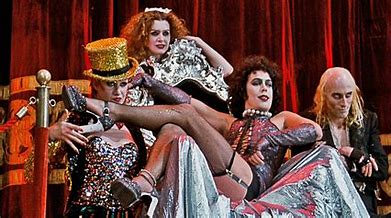
Jim Sharman
LGBTQ+ CHARACTER
*Dr. Frank-N-Furter (Tim Curry)
LGBTQ+ ACTOR
ACTOR: Tim Curry
Adapted from the West End musical by Richard O’Brien.
Every boy and every girl, whether gay or straight, must see Richard O’Brien’s fantastical creation, “The Rocky Horror Picture Show.” It has been running continuously on one stage or another/one film theatre or another for almost 50 years since its debut in London’s West End in 1973 and the release of the Lou Adler-produced movie in 1975. It is a GROUP EXPERIENCE with those inspired zingers returning to the screen, resulting from two generations of audience members’ brilliant responses, which is the real entertainment. So, let’s join Brad (Barry Bostwick) and Janet (Susan Sarandon) as they find themselves in the world of Dr. Frank-N-Furter (the incredible Tim Curry), Riff Raff (O’Brien), Magenta (Patricia Quinn), Columbia, a Groupie (Nell Campbell aka Little Nell), Dr. Everett V. Scott, a rival scientist (Jonathan Adams), Eddie, an ex-delivery boy (Meat Loaf) and, finally, The Criminologist, An Expert (Charles Gray) to do …….
Science Fiction/Double Feature – The Lips (those of Patricia Quinn; the voice of Richard O’Brien).
Dammit, Janet – Brad, Janet, and Chorus.
There is a Light (over at the Frankenstein Place): Janet, Brad, Riff Raff, and Chorus.
The Time Warp – Riff Raff, Magenta, The Criminologist, Columbia, and Transylvanians.
Sweet Transvestite – Frank.
The Sword of Damocles – Rocky and the Transylvanians.
Touch-a, Touch-a, Touch Me – Janet with Magenta, Columbia, Rocky, Brad, Frank, and Riff Raf.
Rose Tint My World– Columbia, Rocky, Janet, and Brad.
Fanfare/Don’t Dream It. Be It – Frank with Brad, Janet, Rocky, and Columbia.
Wild and Untamed Thing – Frank with Brad, Janet, Rocky, Columbia, and Riff Raff
I’m Going Home – Frank and Chorus
The Time Warp (Reprise) – Riff Raff and Magenta
Science Fiction/Double Feature (Reprise) – The Lips
NOW SHOWING AT A LATE-NIGHT MOVIE THEATRE NEAR YOU EVERY FRIDAY AND SATURDAY NIGHT!
NOW STREAMING ON AMAZON PRIME, APPLE TV+, YOUTUBE
42. Barry Lyndon (1975)
A
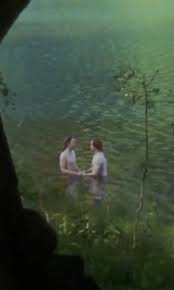
Stanley Kubrick
LGBTQ+ CHARACTER
*Lt. Jonathan Fakenham, gay British soldier (Jonathan Cecil)
LGBTQ+ ACTOR
ACTOR: Murray Melvin
In times like this, I realize how much I care for you and how impossibly empty life would be without you.
Lt. Jonathan Fakenham – BARRY LYNDON
In Stanley Kubrick’s “Barry Lyndon” (1975), there is a moment where Barry (Ryan O’Neal) finds two soldiers naked and holding hands in a pond as they confess their love for each other. Barry overhears their conversation, and he takes advantage of the situation, stealing the clothes of one of the men and assuming his identity. The scene is humorous. But does it mock the lovers? The first time I saw it, I thought so. However, I have come to look at the scene more favorably over the years. Although only an incidental moment in the film, and we never see these characters again, the expression of true love remains with the viewer.
Gay Actor Murray Melvin plays the Reverend Runt, who, by all appearances, is devoted to Lady Lyndon (Marisa Berenson) but is cruelly dismissed by Barry’s mother (Marie Kean).
Oscar-winner John Alcott shot the movie’s famed candlelit cardgame sequence with all-natural lighting. The scene, which features O’Neal, Berenson and Melvin, also introduced the general public to Schubert’s haunting “Piano Trio in E Flat.”
Adapted by Kubrick from the novel “The Luck of Barry Lyndon” (1844) by William Makepeace Thackeray.
NOW STREAMING ON AMAZON PRIME, APPLE TV+, YOUTUBE
43. Dog Day Afternoon (1975)
A+
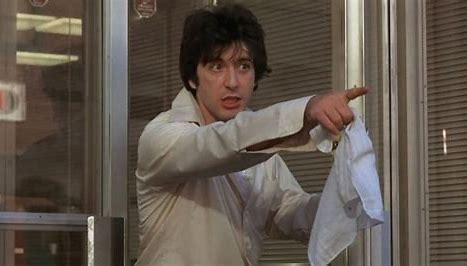
Sidney Lumet
LGBTQ CHARACTERS
*Sonny Wortzik (Al Pacino)
*Leon Shermer (Chris Sarandon)
WITH BROKEBACK MOUNTAIN, THE BEST queer MOVIE EVER MADE.
1975: OSCAR WINNER FOR BEST ORIGINAL SCREENPLAY
(FRANK PIERSON)
1975: NOMINATED FOR BEST FILM, BEST DIRECTOR, BEST ACTOR IN A LEADING ROLE, AND BEST ACTOR IN A SUPPORTING ROLE.
Sidney Lumet’s masterpiece is based on actual events. On a hot August afternoon in 1972, Sonny Wortzik (Al Pacino) and Sal Naturile (John Cazale) attempt to rob the First Brooklyn Savings Bank but only find $1,100 in cash and end up being surrounded by the police. Sonny wants the money to get his lover Leon a sex change, and as a long day journeys into the night, things turn into a circus.
Pacino is magnificent. With Michael Corleone in “The Godfather,” it’s his defining role. And director Sidney Lumet, working wonders in an enclosed space, gets the scenes between Sonny and Leon (Chris Sarandon, excellent) precisely right. Funny but endearing. Not a trace of condescension. Can this be the same team that gave us the rancid “The Anderson Tapes?”
Great work, as well, by Charles Durning as the head police officer.
NOW STREAMING ON AMAZON PRIME, APPLE TV+, YOUTUBE
44. Fox and His Friends (1975)
B+

Rainer Werner Fassbinder
LGBTQ+ CHARACTERS
*Franz “Fox” Bieberkopf (Rainer Werner Fasbinder)
*Eugen (Peter Chatel)
*Max (Karlheinz Böhm)
LGBTQ+ ACTOR | PRODUCER | DIRECTOR | SCREENWRITER
Rainer Werner Fassbinder
QUEER CINEMA MEETS NEW GERMAN CINEMA: PART TWO.
Fassbinder’s companion piece to “Bitter Tears,” which he had made three years previously. Here, he casts himself against type as a working-class gay man who wins the lottery and then falls in love with the elegant son of an industrialist (Peter Chatel) who ultimately swindles the easily flattered “Fox” out of his fortune.
A fascinating look at gay life in the seventies, it’s one of at least a dozen great movies Fassbinder wrote and directed in the decade before his untimely death. Karlheinz Böhm, who starred in Michael Powel’s “Peeping Tom” in 1960, is the older sophisticate who introduces Fox to his circle of wealthy friends.
The name of Fassbinder’s character was taken from Alfred Doblin’s 1929 novel Berlin Alexanderplatz, which the director later adapted for television.
Photographed by the great German cinematographer Michael Ballhaus before he immigrated to The United States and Hollywood.
Original screenplay by Fassbinder.
NOW STREAMING ON AMAZON PRIME, APPLE TV+, The Criterion Collection, MAX (YOUTUBE)
45. Grey Gardens (1975)
A+
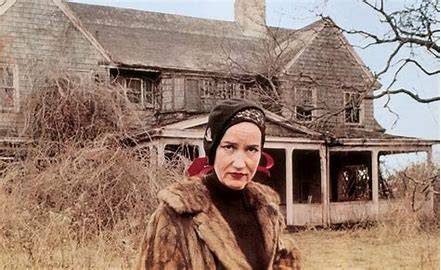
Grey Gardens: Albert and David Maysles
LGBTQ+ CHARACTERS
Grey Gardens: None. But Big and Little Edie Bouvier have entered the hearts of gay men everywhere! Well, maybe not everywhere!
I need profesional music!
Big Edie Bouvier
Special mention to the TV movie “Grey Gardens” (2009)
Special mention to the TV Limited Series” Feud: Capote vs The Swans” (2024)
The film “Grey Gardens” tells the story of Big Edie and Little Edie Bouvier, the aunt and cousin of former First Lady Jacqueline Bouvier Kennedy Onassis. When the brothers Albert and David Maysles discovered them in the early seventies, Big Edie, who was almost eighty at the time, and Little Edie, who was fifty-six, appeared to be stuck in another era, holding onto their aristocratic past while living in a crumbling house and caring for numerous cats and raccoons.
The Maysles were already famous for their unique style of filmmaking, which they had used in such classics as “Salesman” (1969) and “Gimme Sheler” (1970), where, at the Rolling Stones Altamont Free Concert, they unexpectedly captured on film the altercation between Altamont attendee Meredith Hunter and Hells Angel Alan Passaro that resulted in Hunter’s death. Their film footage showed Hunter drawing and pointing a revolver just before being stabbed by Passaro, who was later acquitted of Hunter’s murder on self-defense grounds after the jury viewed the film. They christened their style Direct Cinema, a type of cinéma vérité with no directorial interference, although some critics, such as Pauline Kael, accused them of staging and more!
The filmmakers gained Big Edie’s and Little Edie’s trust and filmed at Grey Gardens for several weeks. They and their co-directors, Ellen Hovde and Muffie Meyer, then carefully edited their footage to create a remarkable documentary that captured the essence of the women and their unique lifestyles. After its release, the film’s high campness – a tragic story set in the faded milieu of New York high society and some deliciously bitchy one-liners between mother and daughter – developed a significant gay following. Little Edie had a unique fashion sense, particularly with her head scarves, and, over time, some gay fashion designers credited her as an inspiration for their work. She was also a wanna-be cabaret artist, and after her mother’s death, she did achieve her goal of signing in some of Manhattan’s top Cabaret venues, mainly to the gay audiences who had grown to love her over the years since the film’s release.
The documentary received a Criterion Collection DVD release in 2001, where it is now available for screening. By the turn of the century, it had become a definitive gay cult classic, inspiring songs such as Rufus Wainright’s “Grey Gardens.” In 2006, the film was adapted into a musical play by three gay men: Doug Wright, Scott Frankel, and Michael Korie. In 2009, it was adapted into a highly successful TV movie by gay writer/directors Michael Sucsy and Patricia Rozema. It starred Jessica Lange and Drew Barrymore as Big and Little Edie, respectively; Jeanne Tripplehorn as Jacqueline Kennedy; Ayre Gross and Justin Lewis as Albert and David Maysles.
The Maysles brothers have returned in high style, thanks to the conceit behind the third episode, “Masquerade 1966,” of Ryan Murphy’s new limited series “Feud: Capote vs the Swans.” Written by Jon Robin Baitz and directed by Gus Van Sant, the episode brilliantly interweaves the footage the brothers filmed (with Charlotte Zwerin) for their documentary “With Love from Truman” in which Truman Capote, having just published his masterpiece, “In Cold Blood,” has reinterred New York society and is sorting the invitations (who is in and who is out) to his famous 1966 Masked Ball at the Plaza Hotel. In what has to be some of the most mesmerizing moments in television history, the entire episode – apart from the closing moments, when Truman (the excellent Tom Hollander) dances with the ghost of his dead mother (Murphy’s muse, the incredible Jessica Lang back after playing Joan Crawford in “Feud: Bette and Joan”) while The Swans – Babe Paley (Naomi Watts), Slim Keith (Diane Lane), C. Z. Guest (Chloe Sevigny) and Lee Radziwell (Calista Flockhart) look on – is shown as part of the brothers’ black-and-white “footage” giving The Swans ample time to bitch and moan about Truman. Pawel Szajda plays Albert and Yuval David plays David. There is a scene where Truman flirts outrageously with Albert in the back seat of a car and another where Truman and Albert slow dance in Truman’s living room. It’s during this scene that Albert quotes Saint Theresa of Avilla: “More tears are shed over Answered Prayers than unanswered ones,” giving Truman the title of his new book on New York society that he would never publish – apart from the articles in Esquire Magazine in 1975 in which he betrayed the trust of The Swans and for which Paley and Keith never forgave him. David Maysles died from a brain hemorrhage at age 55 in 1987. Albert died at age 88 in 2015.
GREY GARDENS, THE DOCUMENTARY BY ALBERT AND DAVID MATSLES, IS NOW STREAMING ON AMAZON PRIME, APPLE TV+, YOUTUBE and THE CRITERION COLLECTION
GREY GARDENS, THE TV MOVIE, IS NOW STREAMING ON AMAZON PRIME, APPLE TV+ AND YOUTUBE THROUGH MAX.
FEUD: CAPOTE VS. SWANS IS CURRENTLY STREAMING ON HULU (FX)
46. THE EIGER SANCTION (1975)
D+
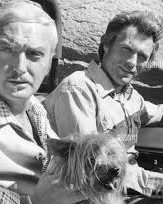
Clint Eastwood
LGBTQ CHARACTERS
*Miles Mellough (Jack Cassidy)
*FAGGOT (uncredited)
CINEMA’S FIRST QUEER CANINE
Special mention has to go to the cinema’s first Queer Canine. The lovingly named Faggot was a tiny little rascal – you know, the breed of dog only a homosexual would own – who vigorously humped the legs of any male who came in contact with his owner Miles Mellough, an effete Jack Cassidy, doing a variation on one of his legendary “Colombo” villains but with a queer turn.
Directed by and starring Clint Eastwood and based on the 1972 novel of the same name by Trevanian (the nom-de-plume of Rodney William Whitaker), the film is about Jonathan Hemlock (Eastwood), an art history professor, mountain climber, and former assassin (wow!) once employed by a secret government agency, who is blackmailed into returning to his deadly profession – and joining an international climbing team – for one last mission.
When we first meet FAGGOT he is pleasuring himself on Eastwood’s shoe. Who was the dog who played him? Did he know that the audience probably hated him as much as they hated his master? Was he the go-to pooch in Hollywood for playing queer canine characters in the mid-seventies? Was it nature or nurture? Since he was uncredited, we will never know. Due to a series of continuity glitches, it’s even difficult to know what happened to his character in the movie after Hemlock leaves him and Mellough in the hot Arizona desert to die of sunstroke.
Another example of Eastwood’s homophobia during his seventies heyday, FAGGOT may have had the last canine chuckle since all of those famously hyped Alpine scenes that followed his supposed demise were a bore. Eastwood, the director, matured enough over the years to fashion a sympathetic, if not altogether successful, treatment of J. Edgar Hoover’s long-term relationship with Clyde Tolson in “J. Edgar.”
NOW SHOWING ON AMAZON PRIME, APPLE TV+ AND YOUTUBE
47. Ode to Billy Joe (1976)
C
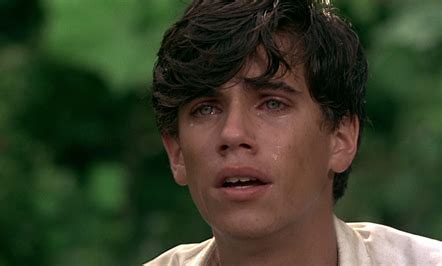
Max Baer
LGBTQ+ CHARACTER
*Billy Joe McAllister (Robby Benson)
Why
did Billy Joe McAllister jump off the Tallahassee Bridge?
THE ANSWER
Because he slept with a man.
The mystery behind Bobbie Gentry’s haunting song should have remained a mystery. That was its allure. That was its magic.
.
Unfortunately, in the summer of 1976, the mystery was “solved” by screenwriter Herman Raucher (“Summer of ‘42”) and actor turned director Max Baer (formerly Jethro in “The Beverly Hillbillies”) whether we liked it or not.
Robby Benson is sympathetic as the unfortunate title character, as is Glynnis O’Connor, his girlfriend – until the plot overtakes her toward the end. Meanwhile, Joan Hotchkis is perfect as O’Connor’s mother. Unfortunately, the film is reductive and backward-looking, and the final scene can only be described as outrageous.
NOW STREAMING ON AMAZON PRIME, APPLE TV+, YOUTUBE
48. Carrie (1976)
A+
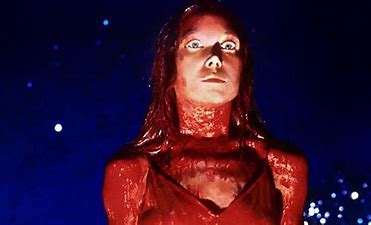
Brian De Palma
LGBTQ+ CHARACTER
*Miss Collins, the gym teacher (Betty Buckley)
QUOTES
Plug it up! Plug it up! Plug it Up! Plug it up!
In the showers, the girls Sue, Chris, Norma, and Helen (Amy Irving, Nancy Allen, P.J. Soles, and Edie McClurg) throw tampons and sanitary pads at Carrie. They are taking a communal shower after a game of volleyball, which Carrie (Sissy Spacek) is responsible for losing. Carrie, hysterical and covered in blood with her arms outstretched, runs towards the girls after she experiences, at age sixteen, her first period. Her mother (Piper Laurie), a religious fanatic, has never told her about menstruation.
That was a really shitty thing you did yesterday, a really shitty thing!
Miss Collins (Betty Buckley) to Sue (Amy Irving).
Ballots? Ballots anyone? Ballots?
Norma (P. J. Soles) IS collecting the ballots for the King and Queen of the school’s prom. Norma then surreptitiously exchanges these ballotts for Chris’ (Nancy Allen) preprepared ones, all of which have a check mark on the box labelled “CARRIE WHITE AND TOMMY ROSS”.
I should have given you to God when you were born. But I was weak. I was backslidin’!
Margaret White (Piper Laurie) to Carrie White (Sissy Spacek).
He took me, with the stink of filthy roadhouse whiskey on his breath. And I liked it!
Margaret White to Carrie White.
I should’ve killed myself when he put it in me!
Margaret White to Carrie White!
After the blood come the boys!
Margaret White to Carrie White.
Eat Shit!
Chris Hargenson to Carrie White after she causes Chris’ team to loose the vollyball game.
DIALOGUE
Margaret White
These are godless times. Mrs. Snell.
Mrs. Snell
(Priscilla Pointer)
I’ll drink to that…
Margaret White
I pray you find Jesus!
Margaret White
I might have known it would be red.
Carrie White:
It’s pink, Mama.
Margaret White
I can see your dirty pillows.
Carrie White:
Breasts, Mama. They’re called breasts, and every woman has them.
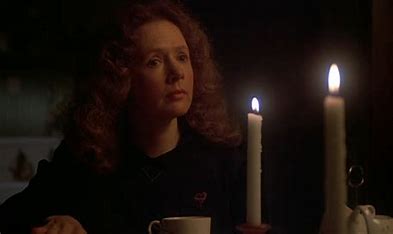
One of the GREAT HORROR MOVIES with tremendous performances from Sissy Spacek and Piper Laurie, the latter returning to the screen after a fifteen-year absence. Brian De Palma’s masterpiece works, like “Mildred Pierce” and “Whatever Happened to Baby Jane,” simultaneously as drama and high camp. We feel for Carrie while at the same time reveling in her mother’s treasure chest of unforgettable lines. It’s a list so long that it will satisfy the gay sensibility of any red-blooded adolescent male! The one gay character in the movie is Betty Buckley’s gym teacher, who gets the plot rolling by coming down hard on the girls Nancy Allen and Amy Irving after the “plug-it-up” scene in the showers. The unforgettable score, one of the all-time greats, is by Pino Donaggio.
Adapted from the novel by Stephen King.
NOW STREAMING ON AMAZON PRIME AND APPLE TV+
49. Sebastiane (1976)
C-
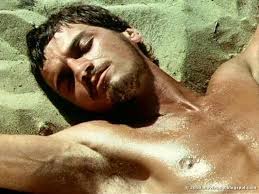
Derek Jarman
LGBTQ+ CHARACTER
*Saint Sebastian (Leonardo Treviglio)
*Severus (Barney James)
LGBTQ+ DIRECTOR | SCREENWRITER
Derek Jarman
Gay director Derek Jarman’s directorial debut is set in the third century AD, and Sebastian is a member of the Emperor Diocletian’s personal guard. When he tries to intervene to stop one of the Emperor’s catamites (prepubescent boys whose sole purpose is sex) from being strangled by one of his bodyguards, Sebastian is exiled to a remote coastal garrison and reduced in rank to private. He is an early Christian and celibate despite all those naked Roman soldiers swarming around him. Severus, the commanding officer of the garrison, who becomes increasingly obsessed with Sebastian, tries to rape him and ultimately presides over his execution by a phalanx of arrows for refusing to take up arms in defense of the Roman Empire.
It’s a start. But what seemed revolutionary in 1976 seems pretty mediocre today. The film is more of a series of tableaux vivants than a narrative feature, and its mostly British cast makes a sad substitution for a sexy Roman garrison. Jarman seems to want to be erotic and anti-erotic, at the same time, having his cake and eating it too. The whole misguided adventure is an exercise in hypocrisy. And the (minimal) Latin dialogue. Oh My! Maybe it would have worked better as a short film.
Jarman was clearly finding his way here, co-directing with Paul Humfress and cowriting with Humfress and James Whaley. Always a somewhat precious filmmaker, he would go on to better things—and give the world, for better or for worse, the phenomenon known as Tilda Swinton—before his life was tragically cut short by AIDS at the age of 52.
NOT AVAILABLE FOR STREAMING. AVAILABLE ON BLUE-RAY AND DVD FROM AMAZON PRIME VIDEO.
50. Suspiria (1976)
A+

Dario Argento
LGBTQ+ CHARACTERS
*Madame Blanc (Joan Bennett)
*Miss Tanner (Alida Valli)
Italian director Dario Argento’s supernatural horror sensation! The film stars Jessica Harper as an American ballet student who transfers to a prestigious dance academy but realizes, after a series of murders, that it’s a front for a coven of lesbian witches who are presided over by legendary actresses Alida Valli and Joan Bennett in her final role. Both actresses were, in a sense, banished from Hollywood – Valli when she didn’t turn out to be Ingrid Bergman despite her obvious talent and Bennett after her husband of the time, Walter Wanger, shot her agent Jennings Lang, who he incorrectly supposed was her lover, in the groin. Wanger went to jail for a few months but made a successful career comeback by producing “I Want to Live.” Lang survived and successfully segued into producing. However, as is often the case, there was no sympathy for the woman involved, and Bennett’s Hollywood career was over. Valli was also involved in a scandal after she returned to Italy in the early fifties when her lover at the time was found dead on an Italian Beach. Both actresses are dressed by Argento and his costume designer Piero Cicoletti in beautifully tailored jackets and suits, and it is interesting to note that after this movie, Valli went on to play another lesbian character in Bertolucci’s failed collaboration with Jill Clayburgh on the movie “Luna” and it’s opera milieu.
As for Harper, she is superb; her opening scene, in which she is stuck in a massive downpour of rain during her journey from the airport to the school, is one of the great openings in a horror movie. When she arrives, she notices something is not quite right – another student is leaving the building in a panic -but why? Where Bertolucci failed, Argento’s style can only be described as operatic, with stunning use of editing (Franco Fraticelli), cinematography (Luciano Tovoli), production design (Giuseppe Bassan), sound effects, costume design and music (written by himself and four other composers collectively known as Goblin).
The location of the movie seems to be an unidentified German city.
The screenplay was written by Argento and his partner at the time, Daria Nicolodi. It is based on “Suspiria de Profundis” by nineteenth-century English writer Thomas De Quincey, who wrote the novel under various stages of opium addiction and withdrawal.
Many of the actors (including Udo Keir) were dubbed into English
remade, rather badly, by Luca Guadadnino in 2018.
SUSPIRIA CAN BE STREAMED AS A SERIES OF 16 SEVEN-MINUTE VIDEOS, WHICH HAVE BEEN DOWNLOADED BY LIAM MOORE ON YOUTUBE
PLEASE CONTINUE TO TABLE
Essay Two. Table. 50 Queer Films from 1967-1976: Queer Cinema Comes Out. – TheBrownees
https://thebrownees.net/essay-one-1-2-65-queer-films-under-the-hays-code-1934-1967/
https://thebrownees.net/essay-one-1-34-queer-films-made-under-the-hays-code-1934-1956/
https://thebrownees.net/essay-one-2-31-queer-films-made-under-the-hays-code-1957-1967/
https://thebrownees.net/essay-one-table-65-queer-films-made-under-the-hays-code-1934-1937/


















